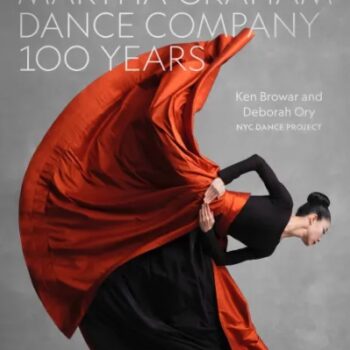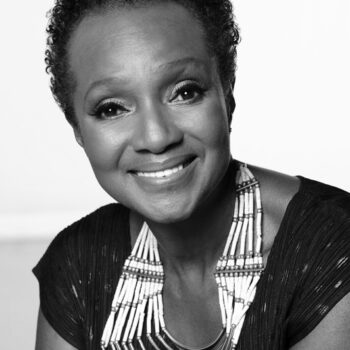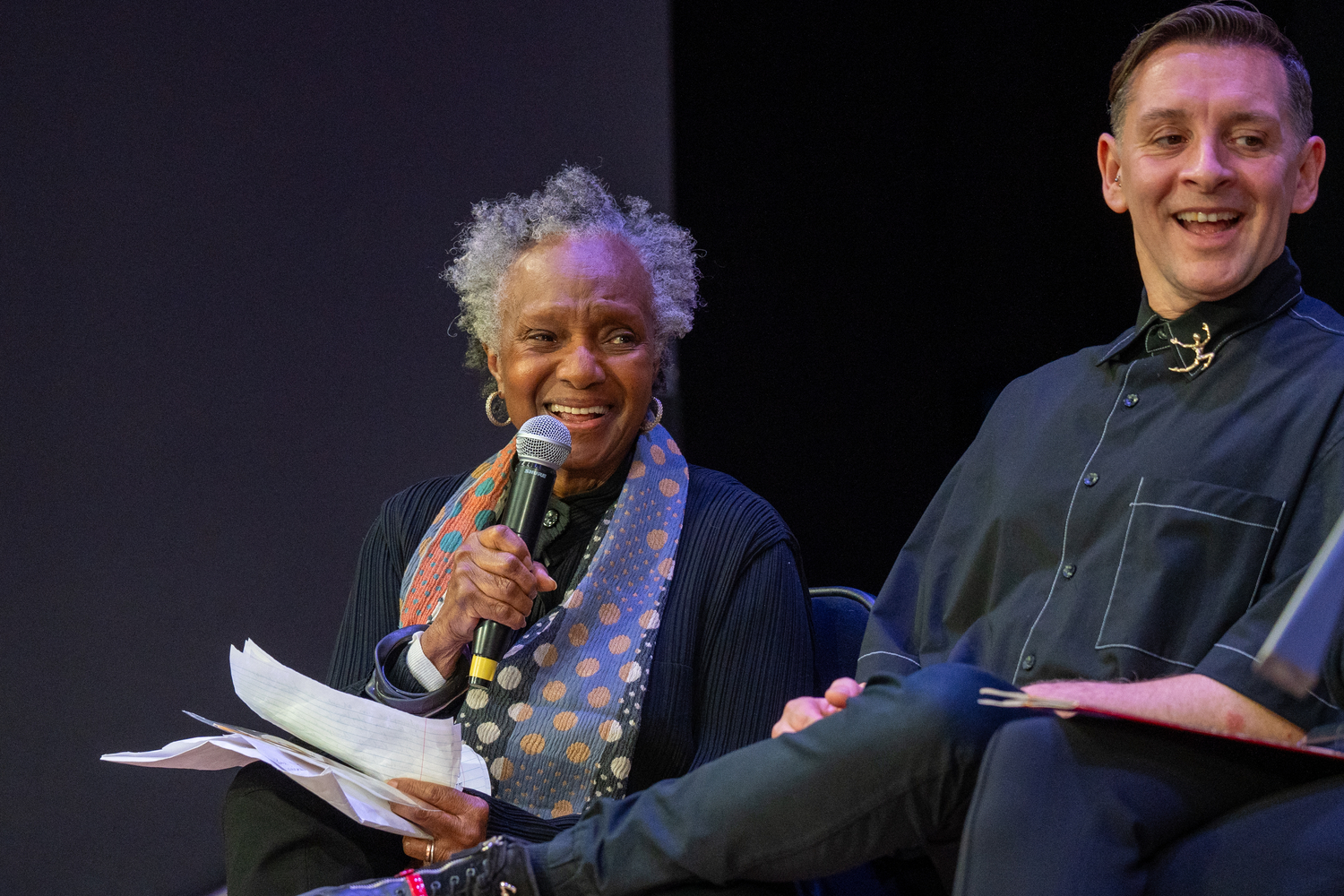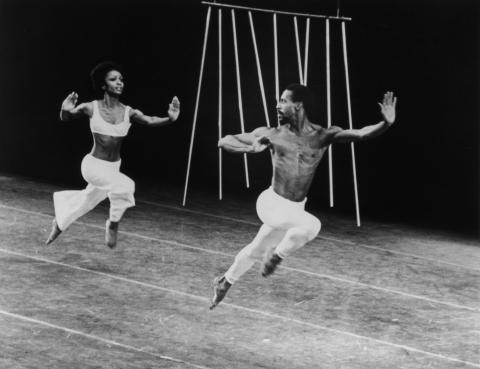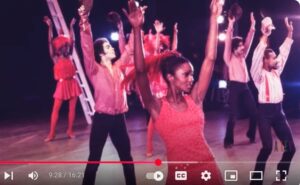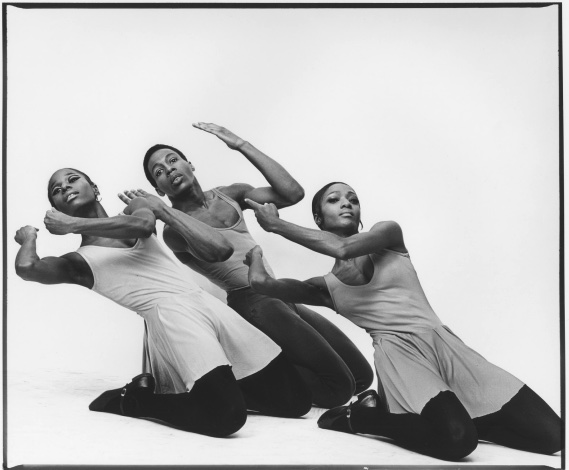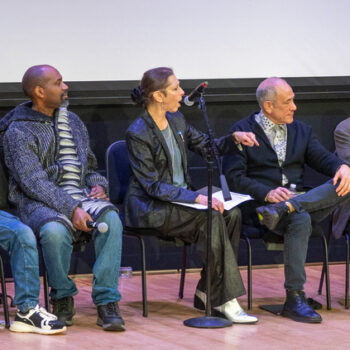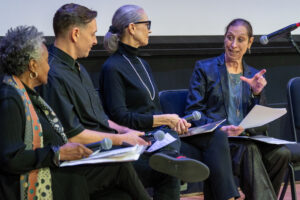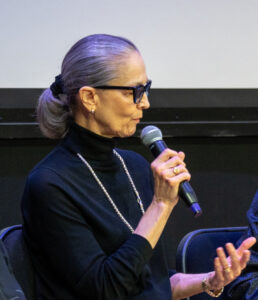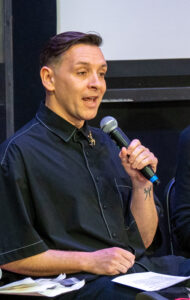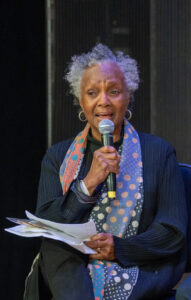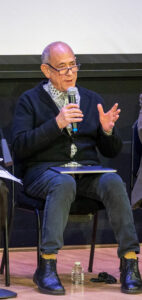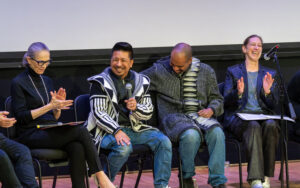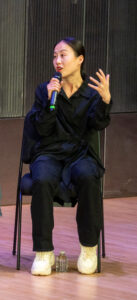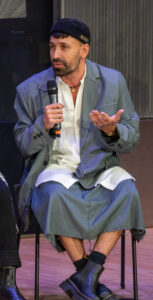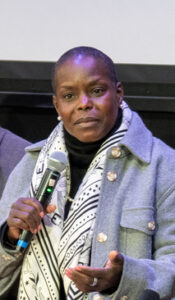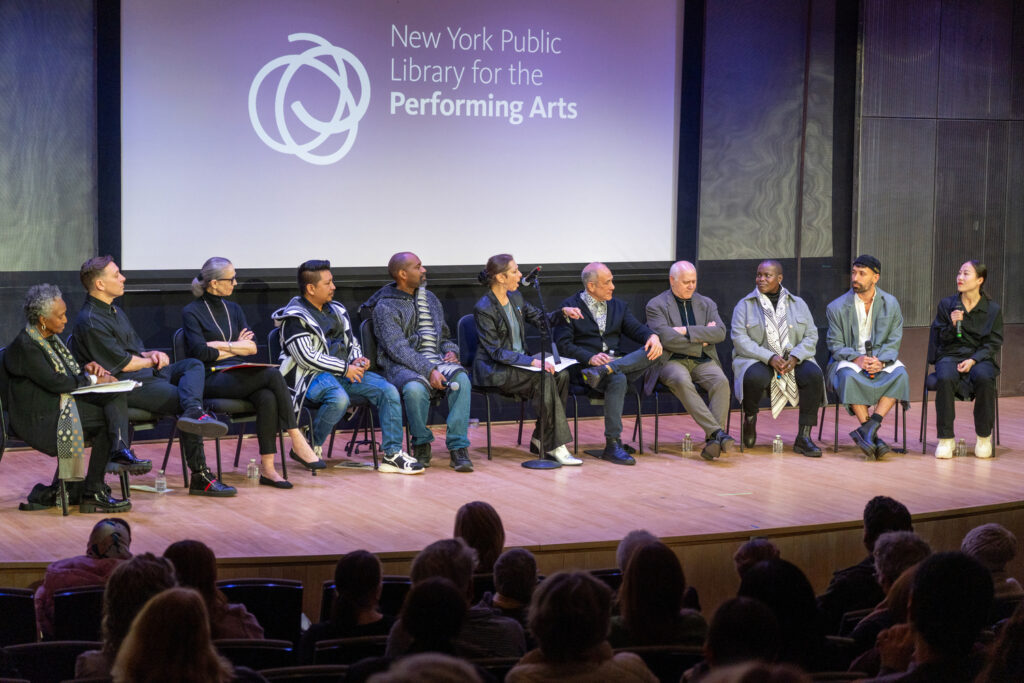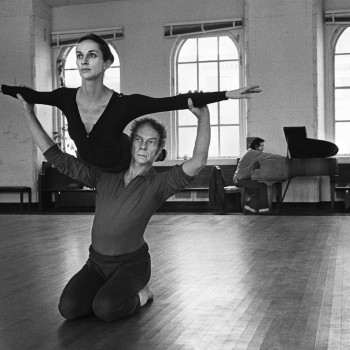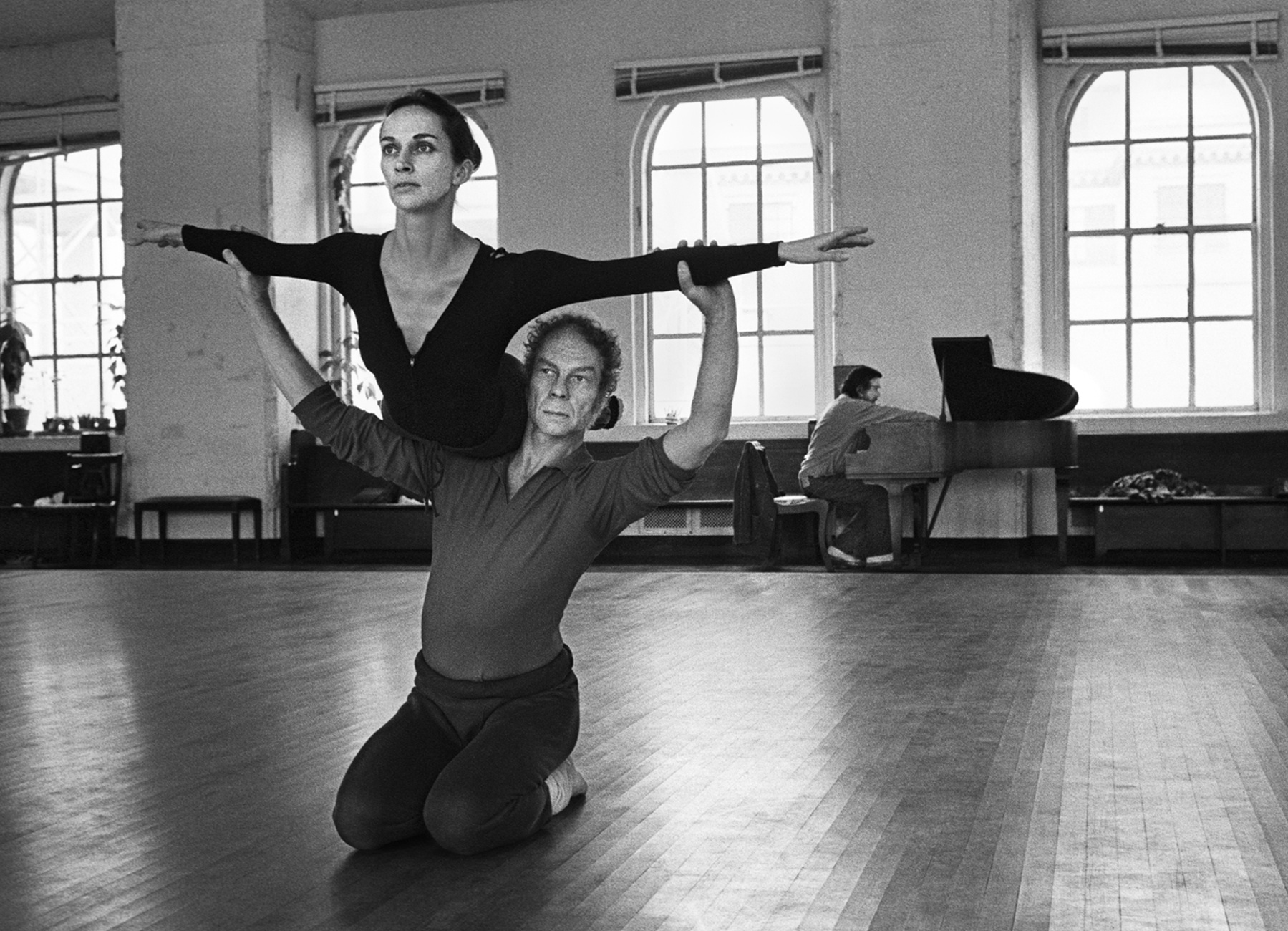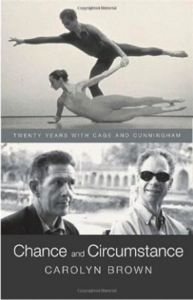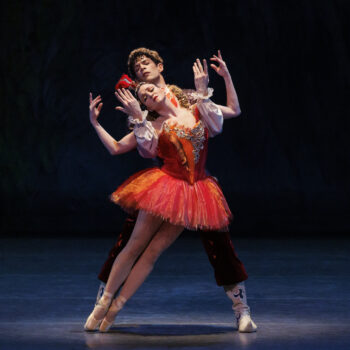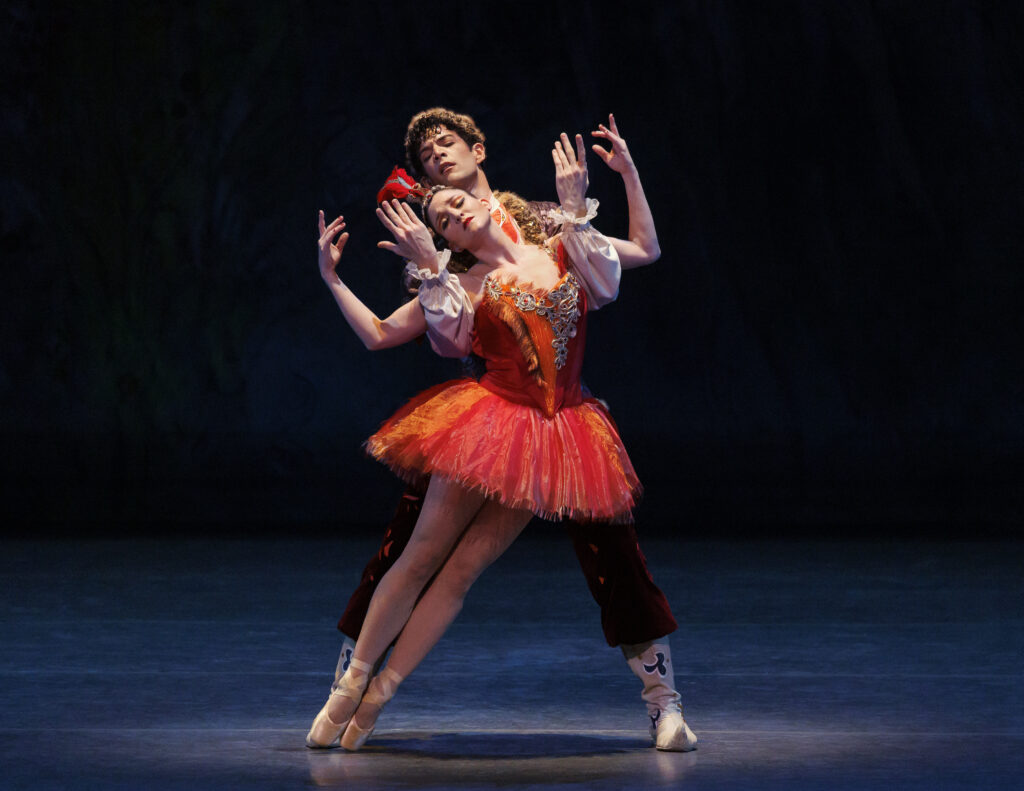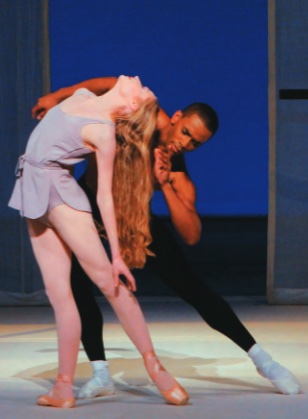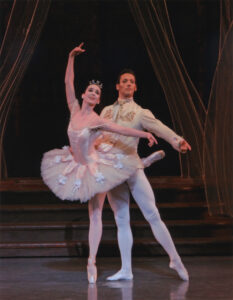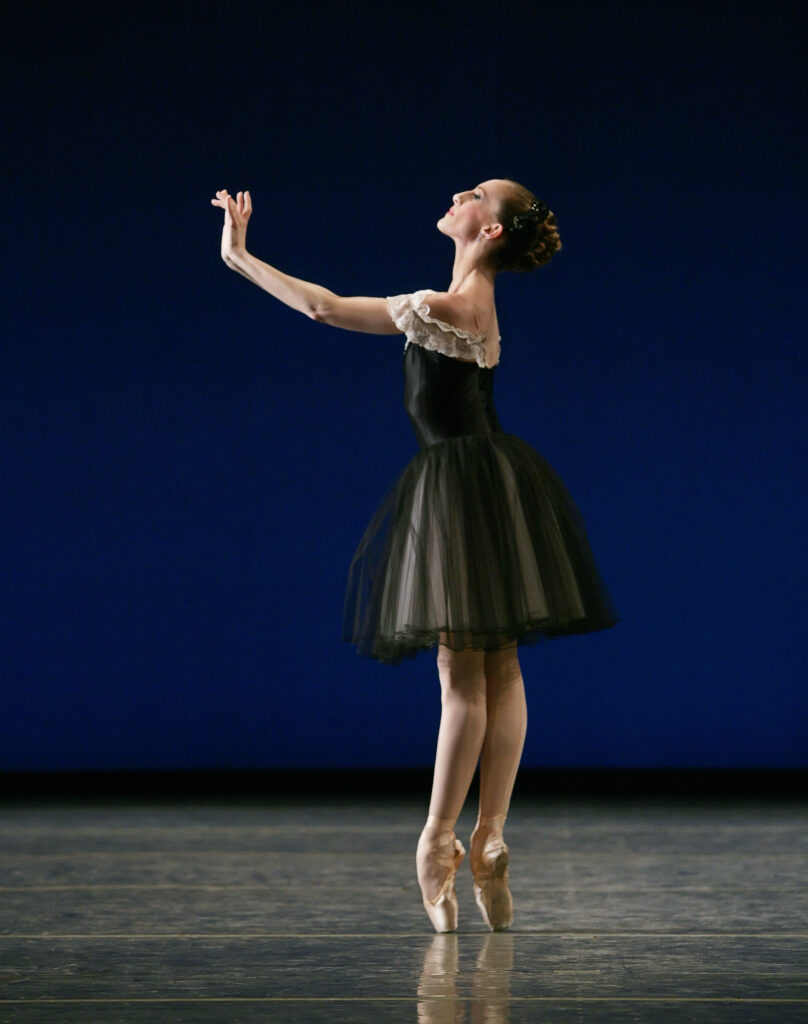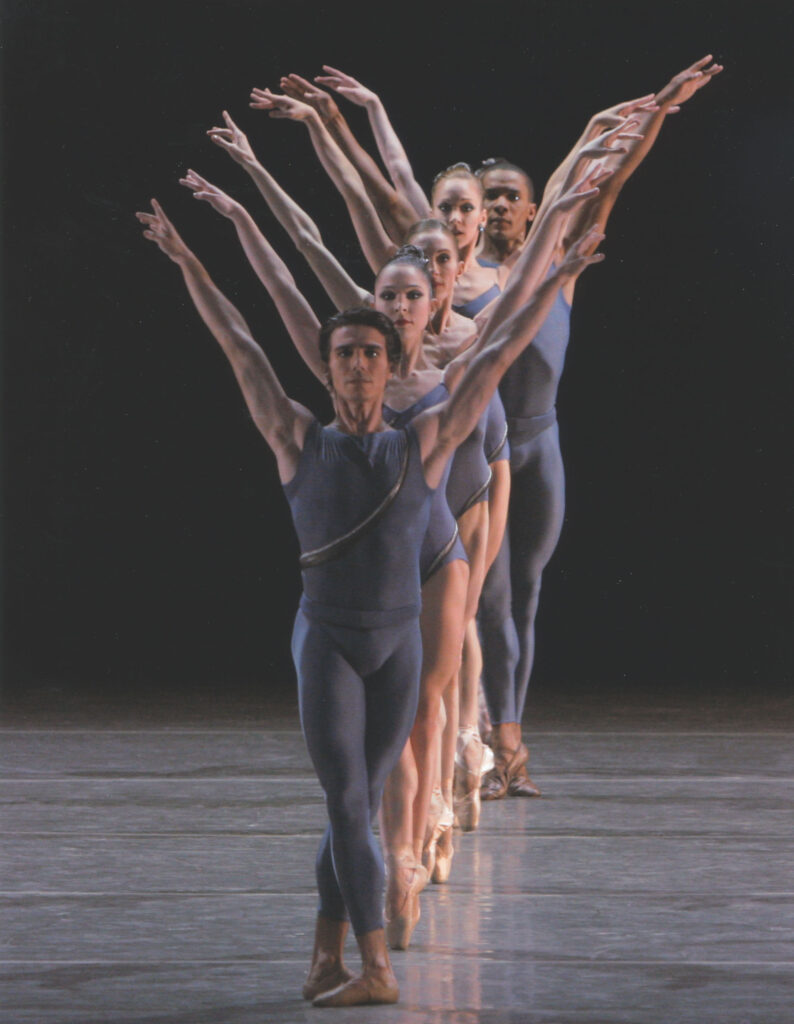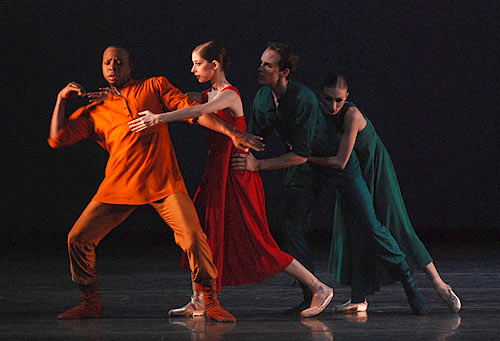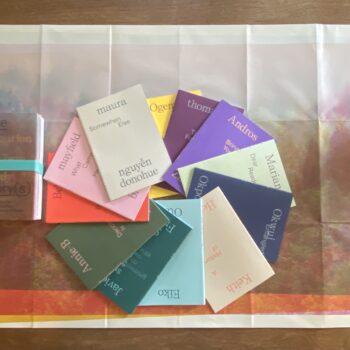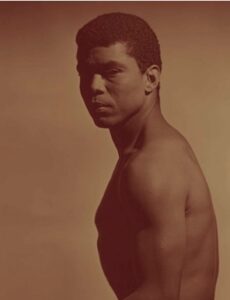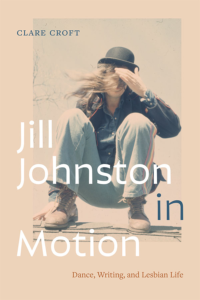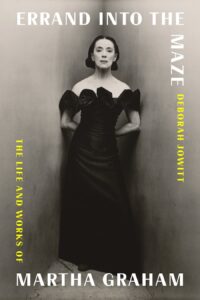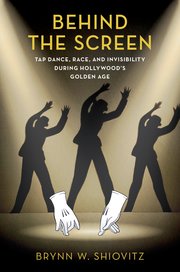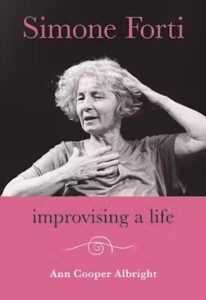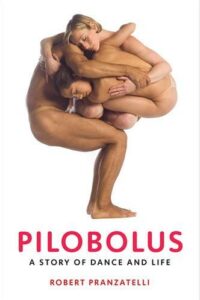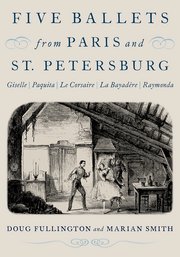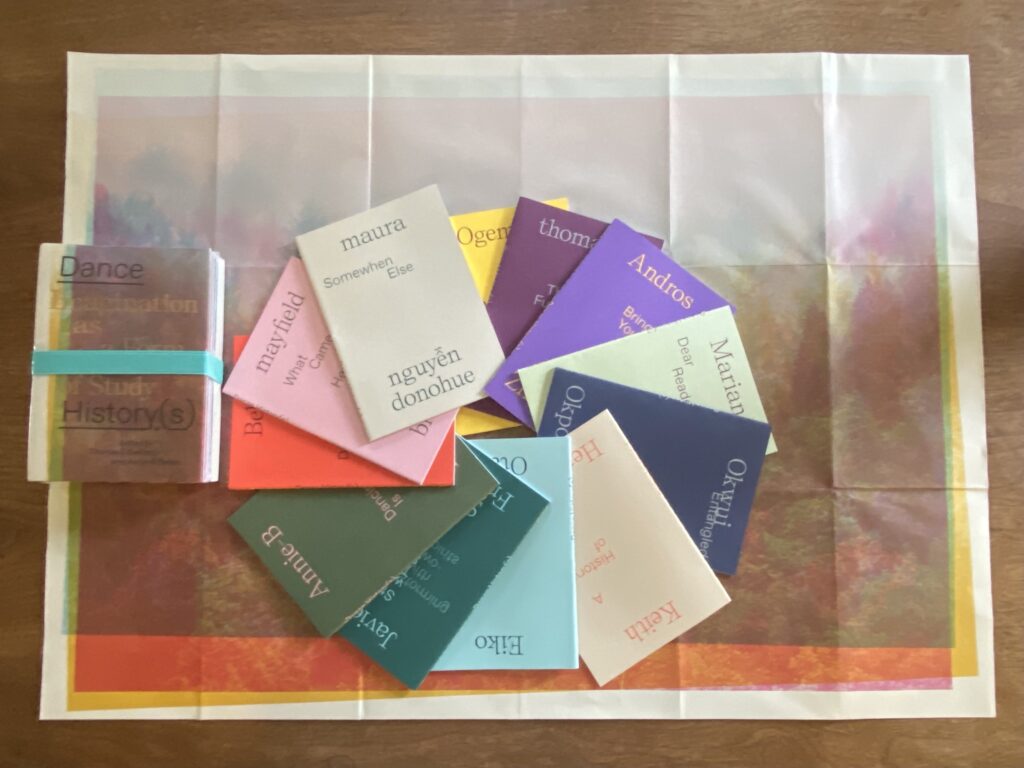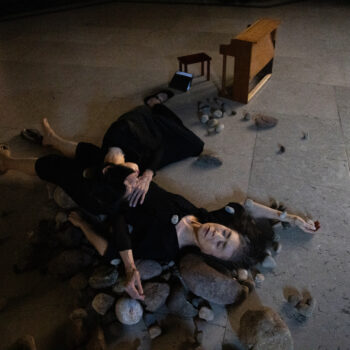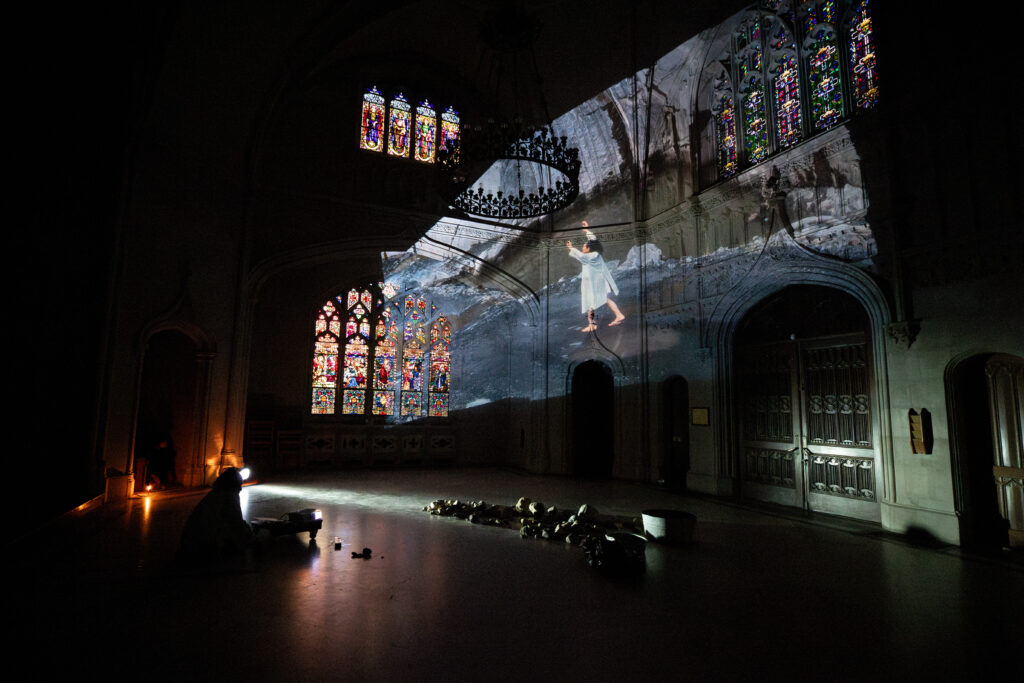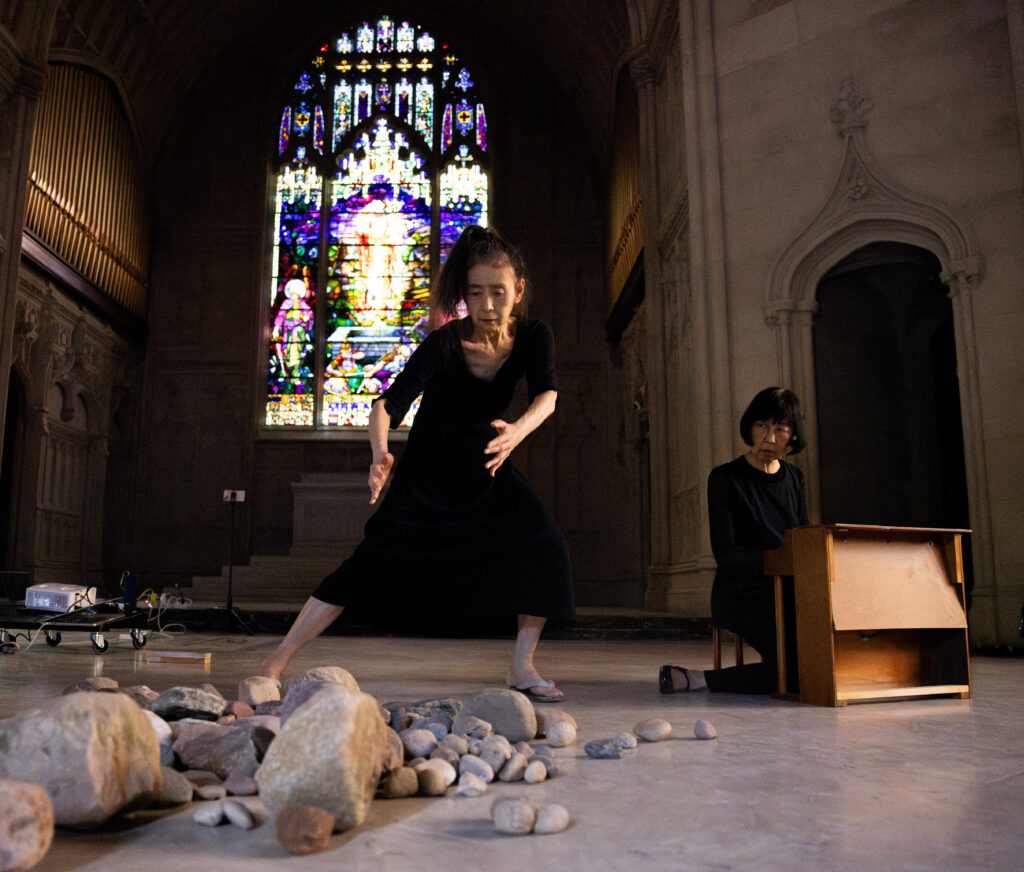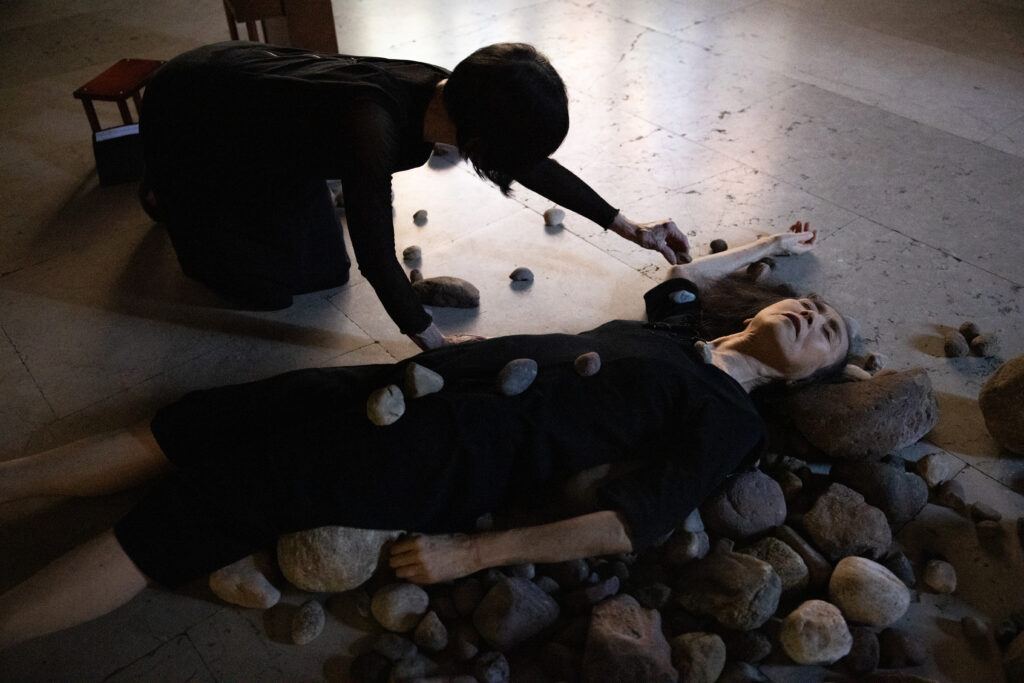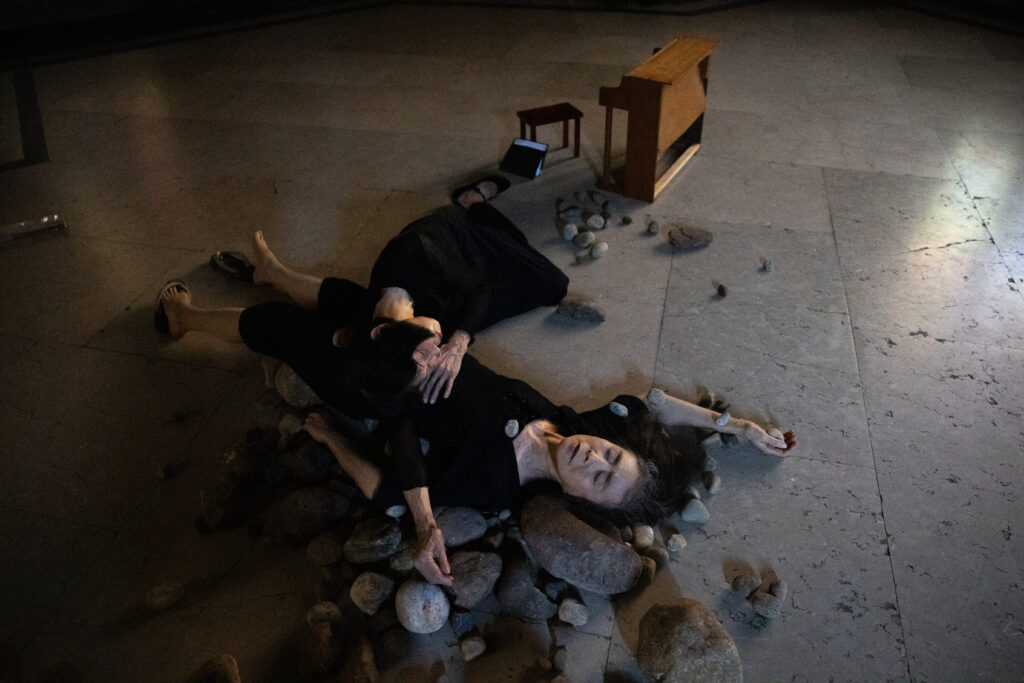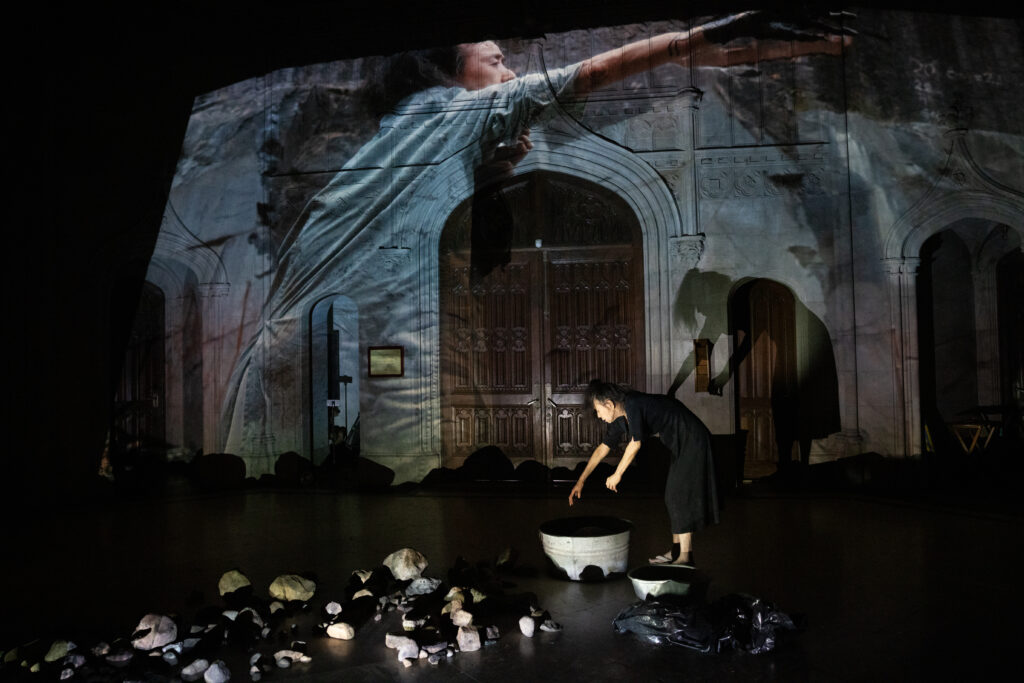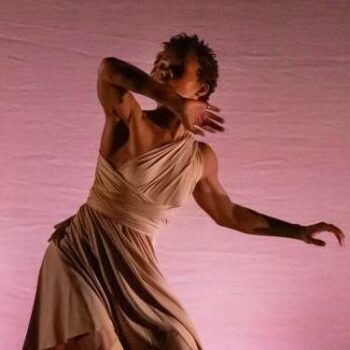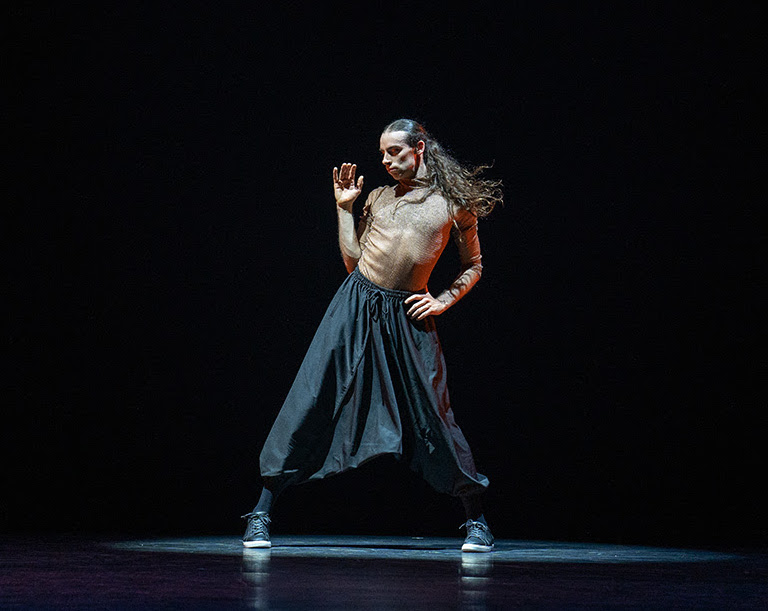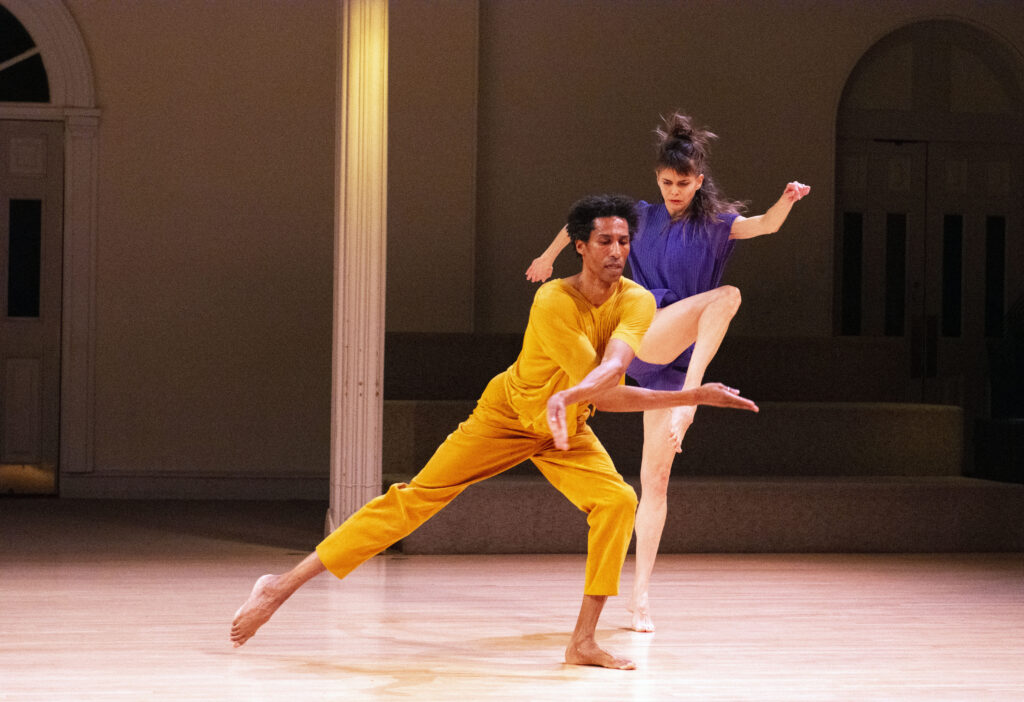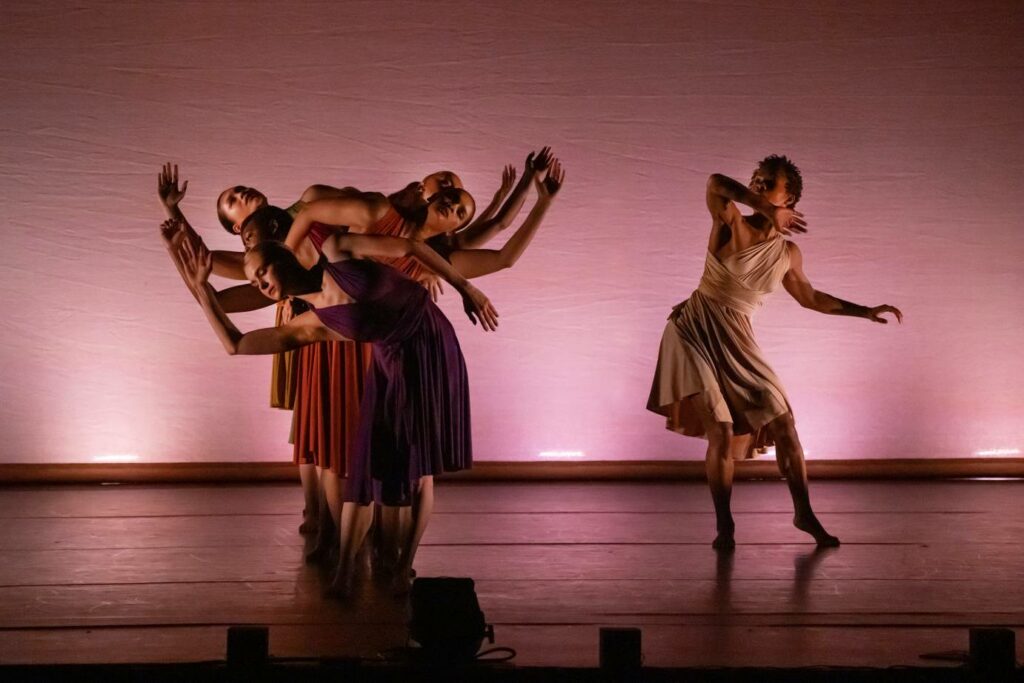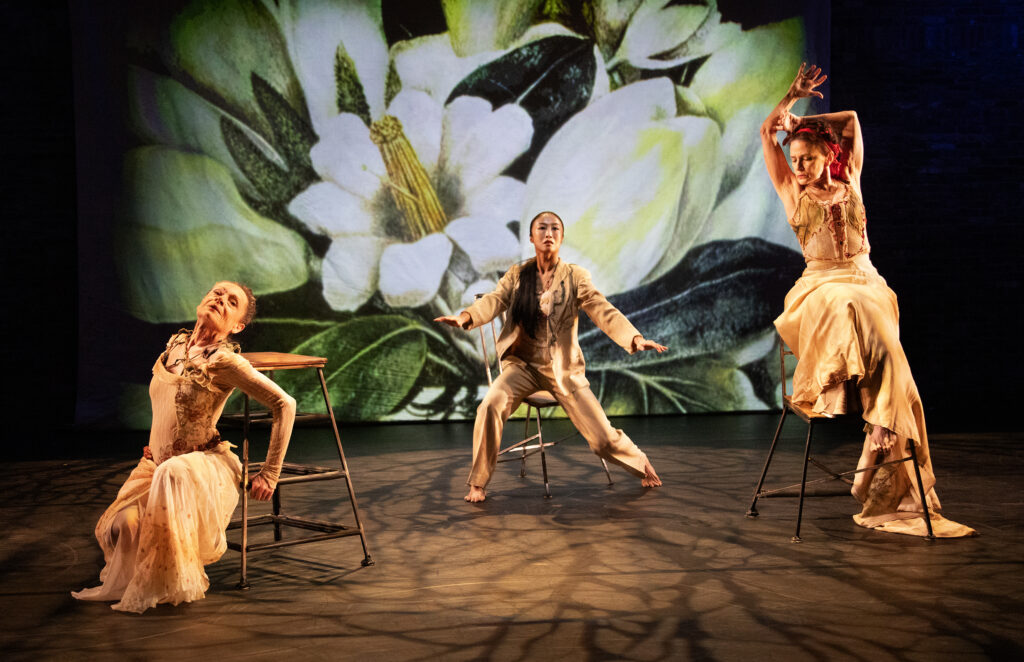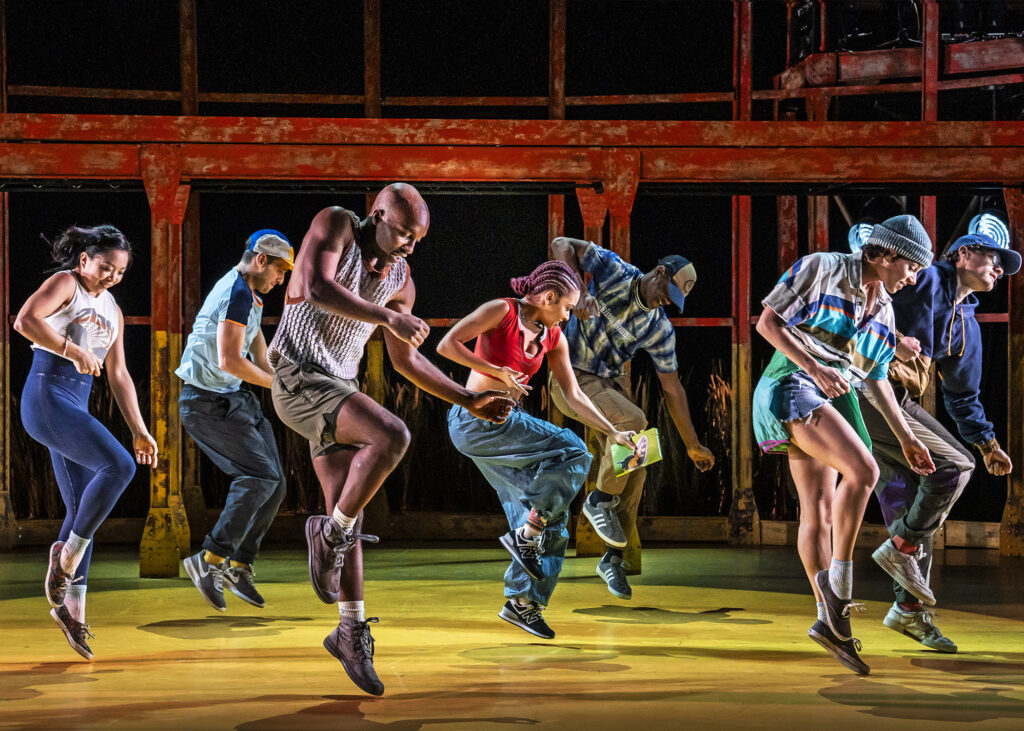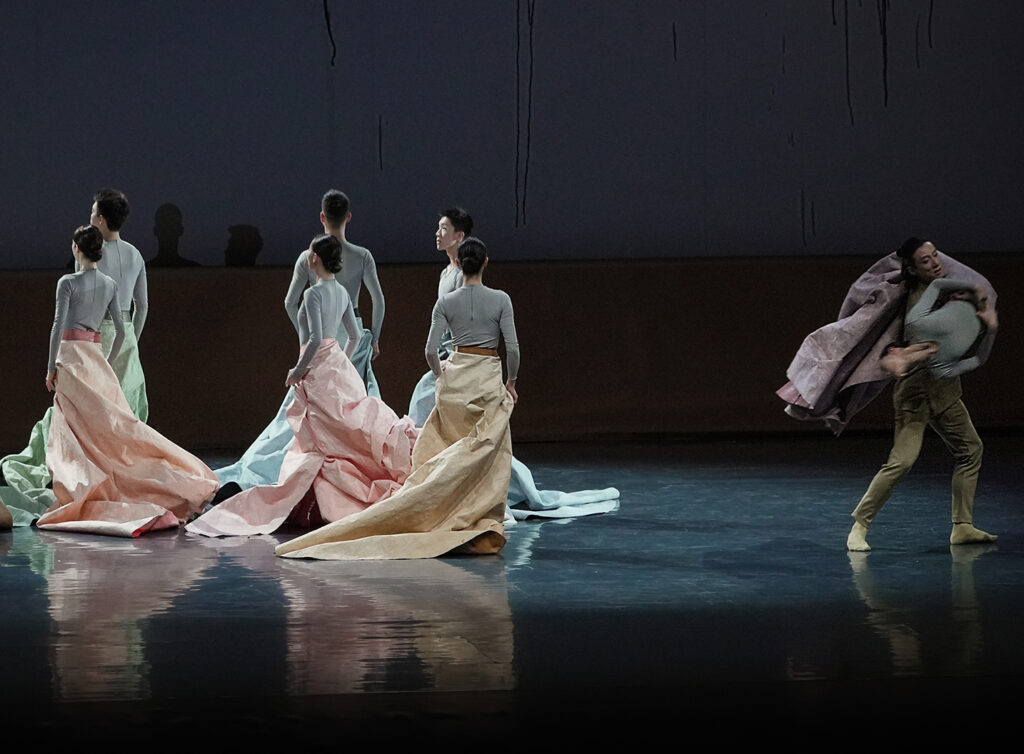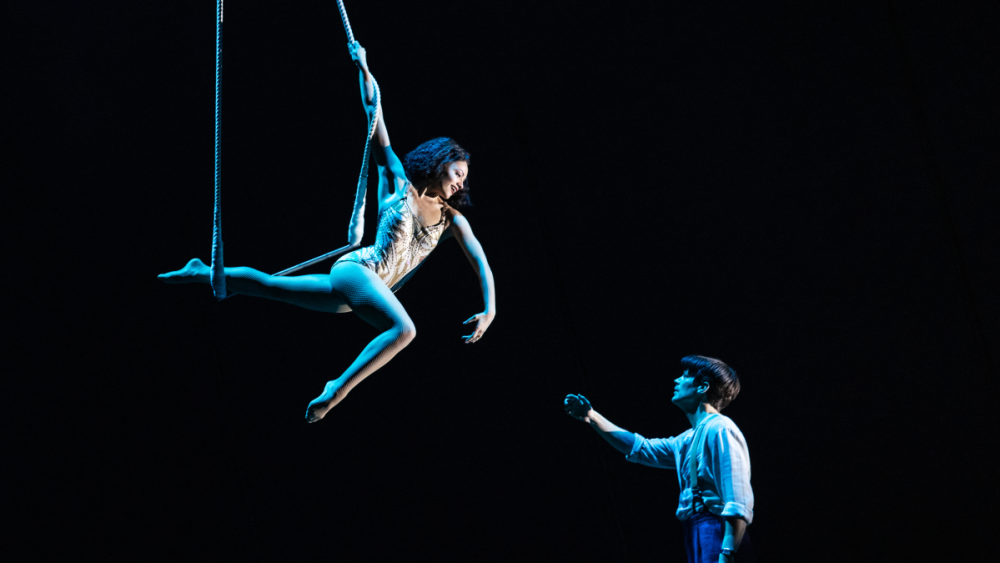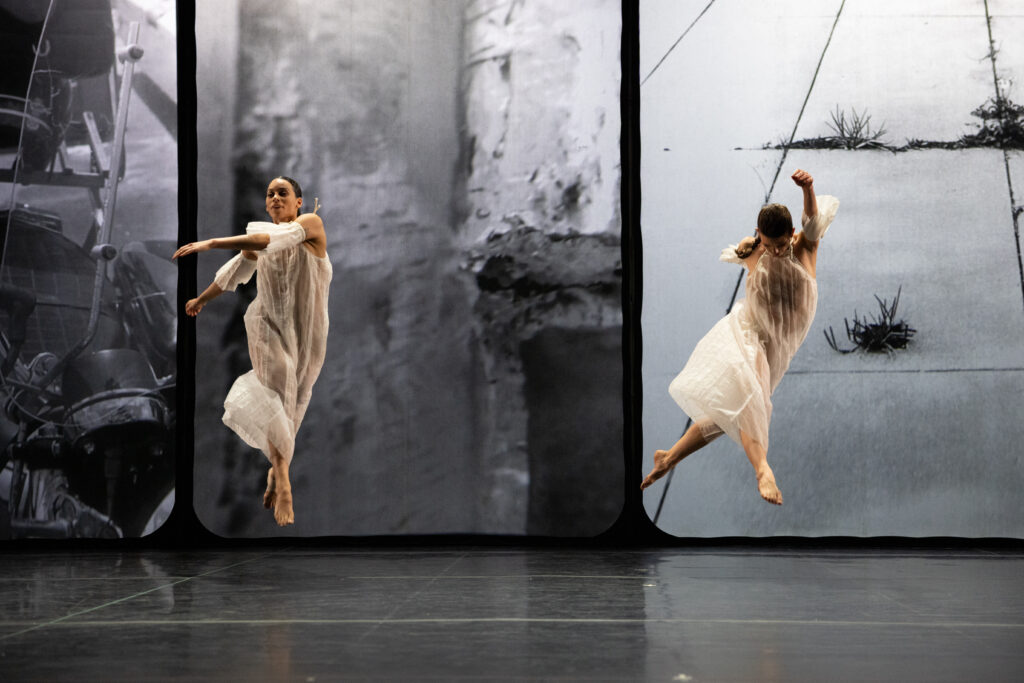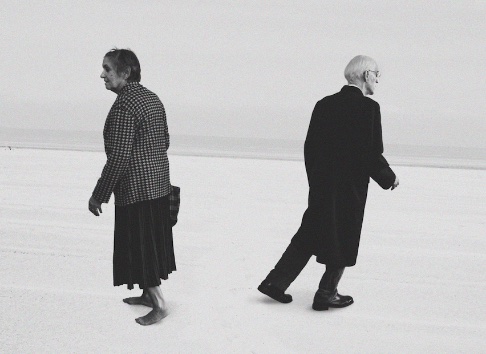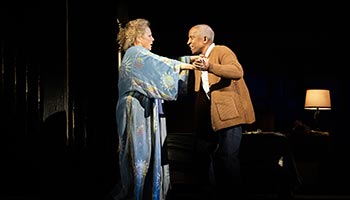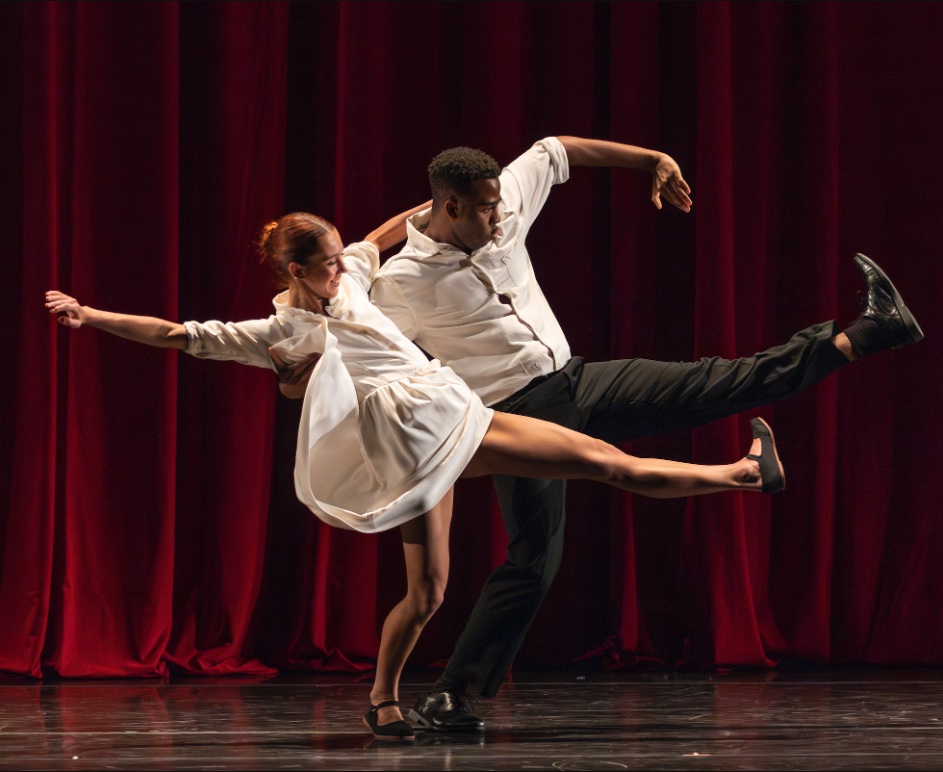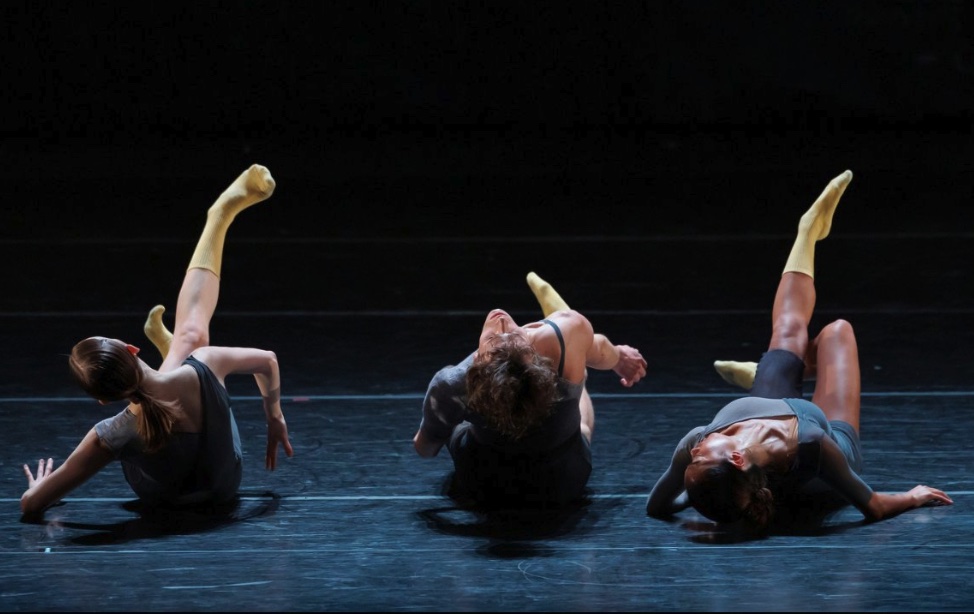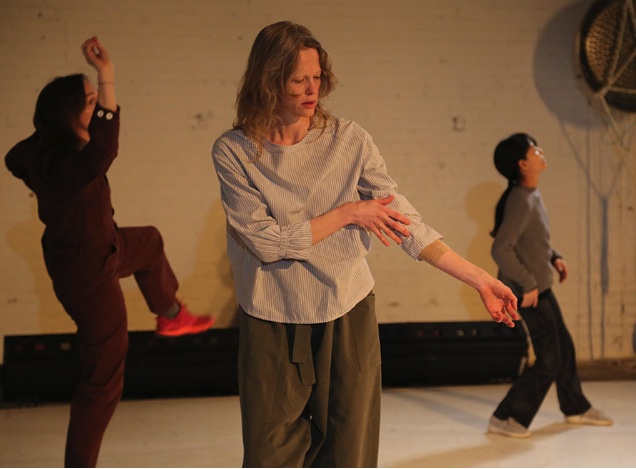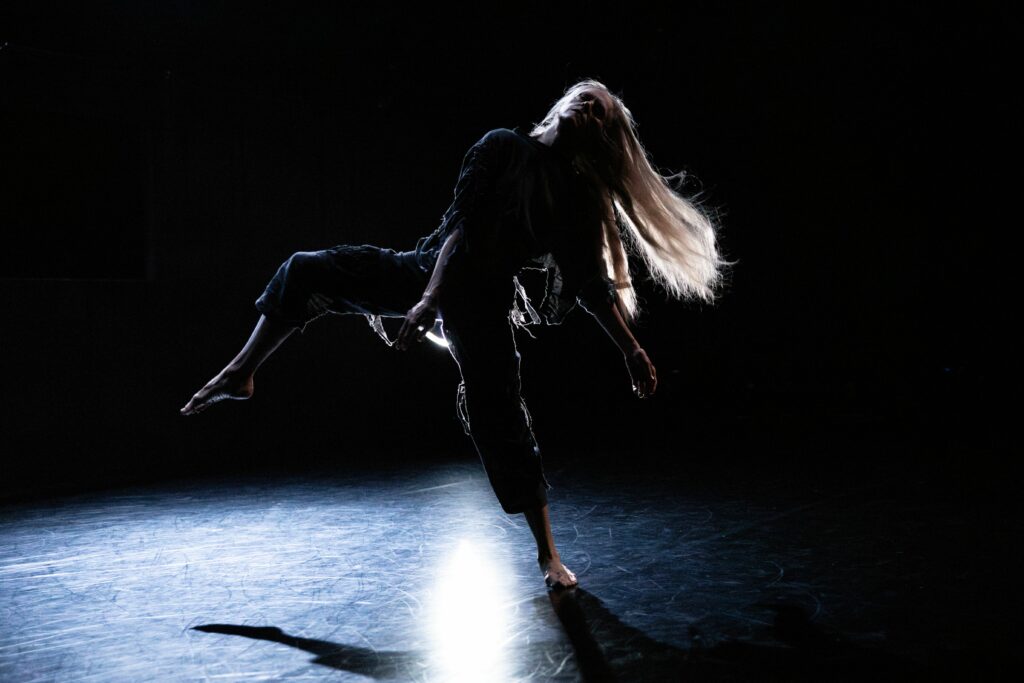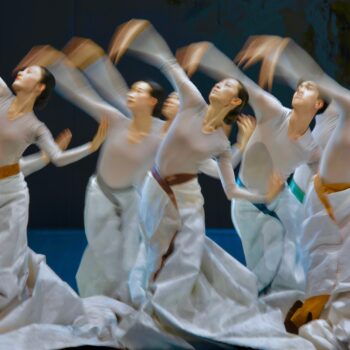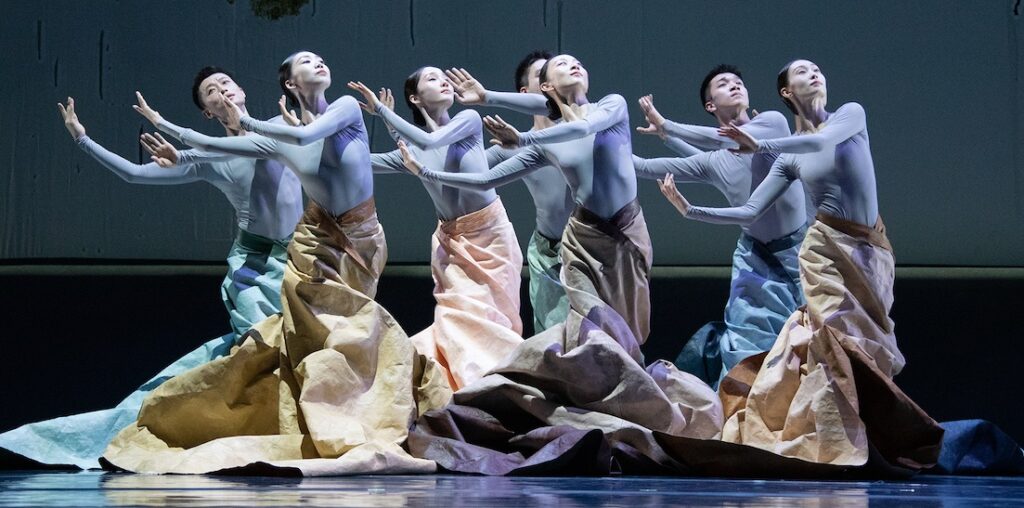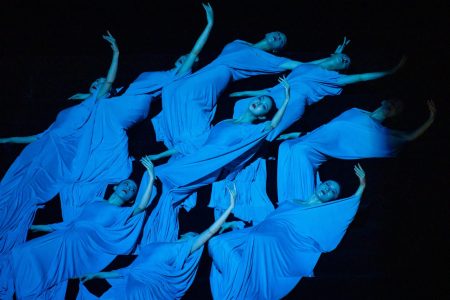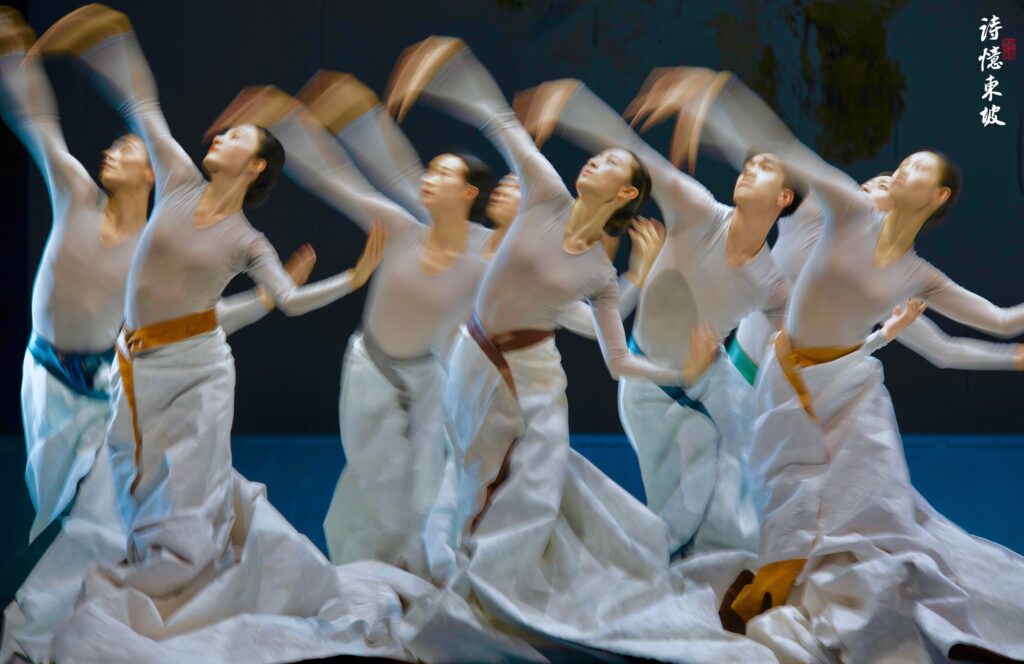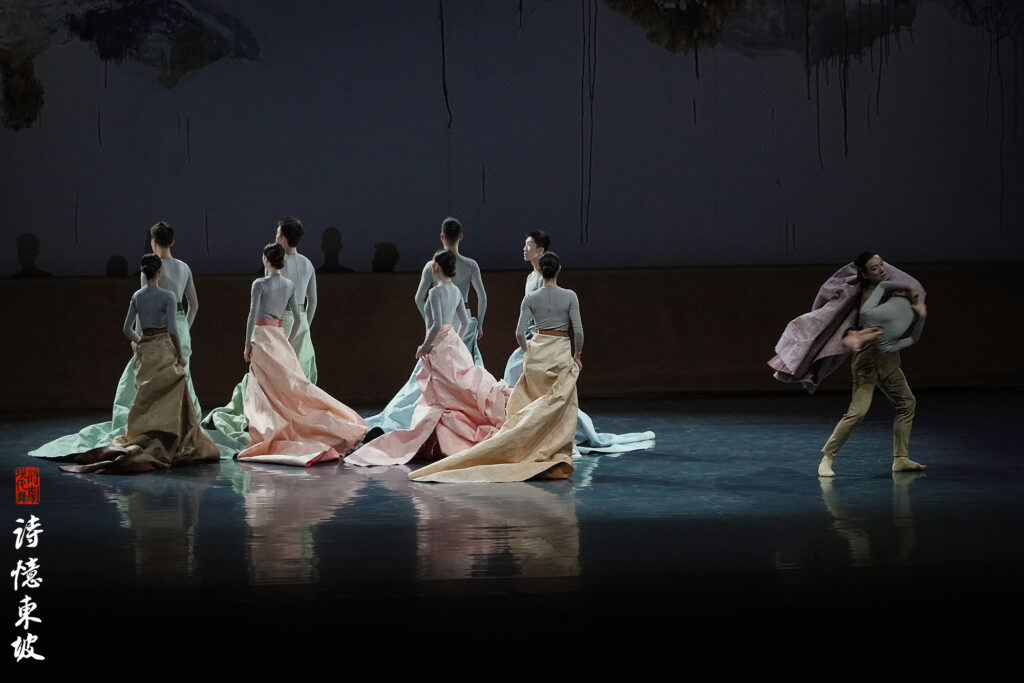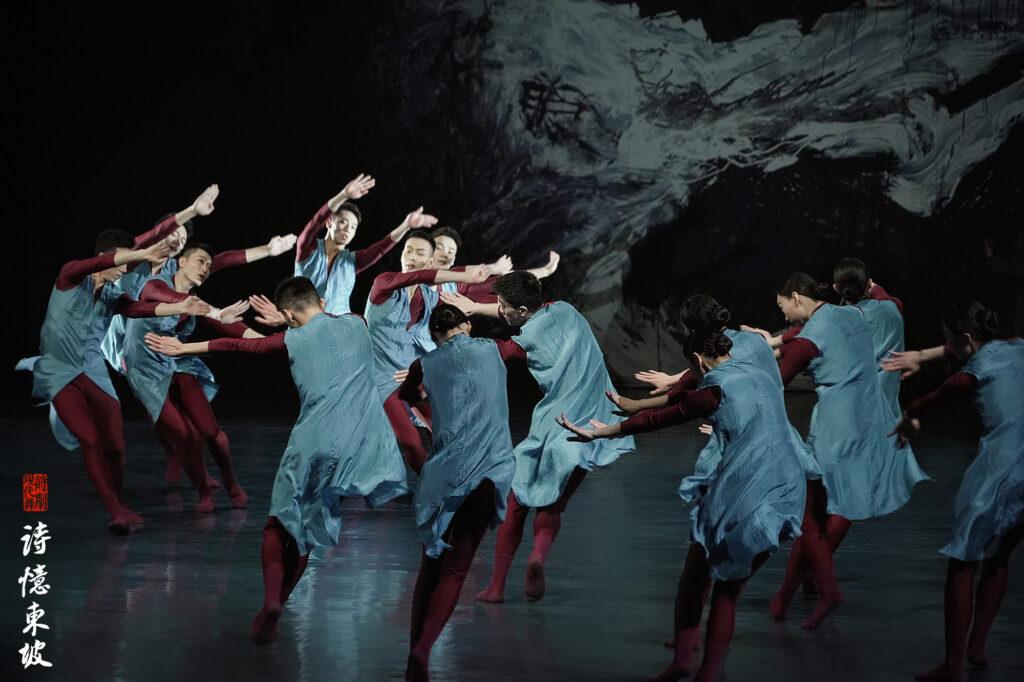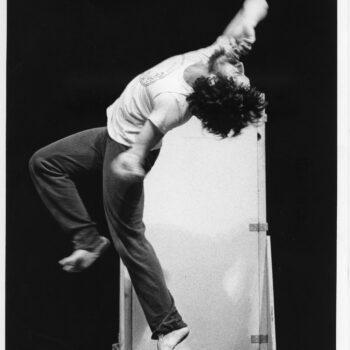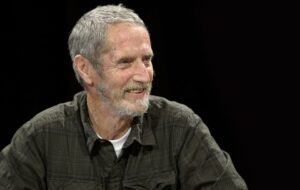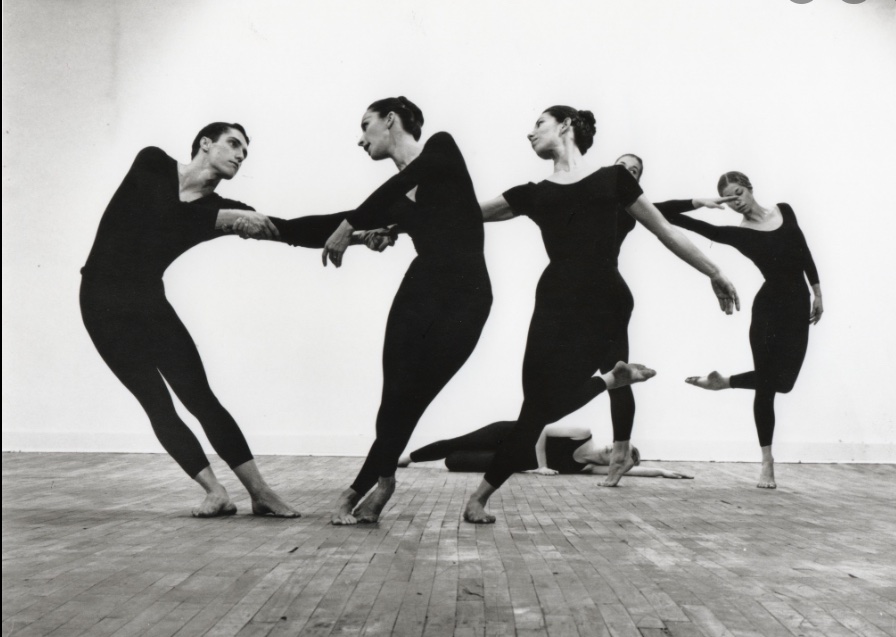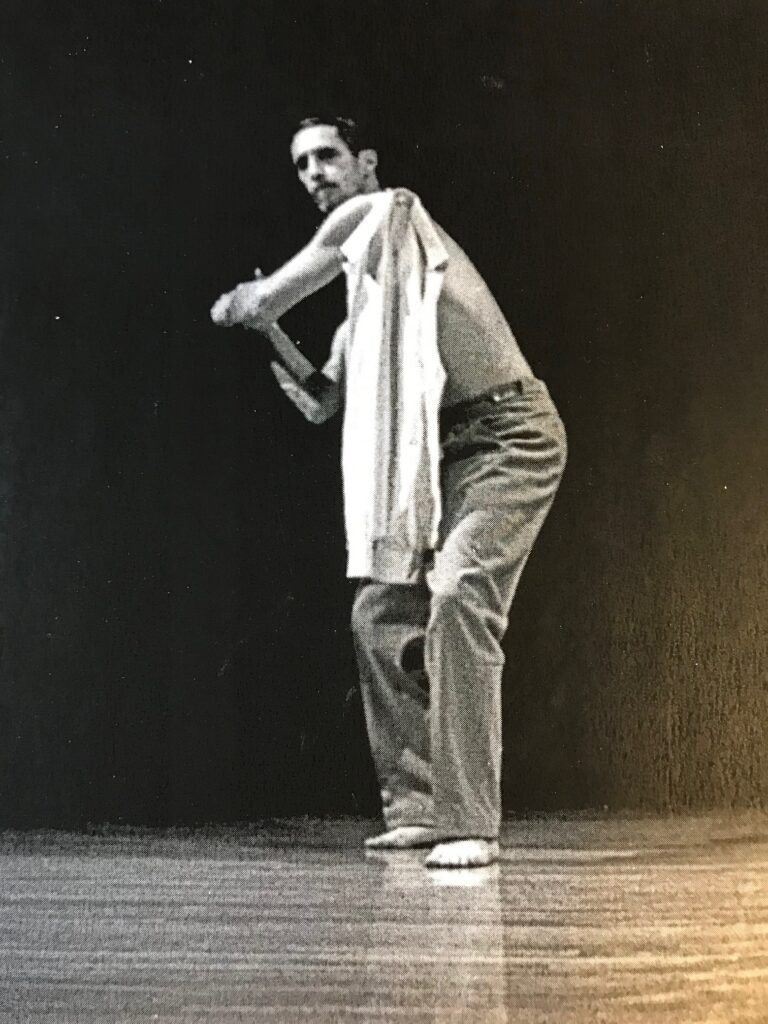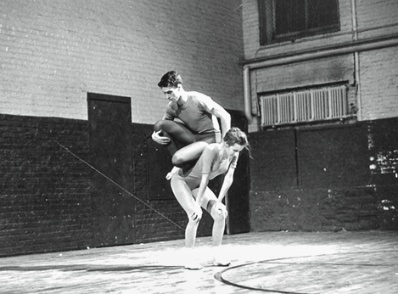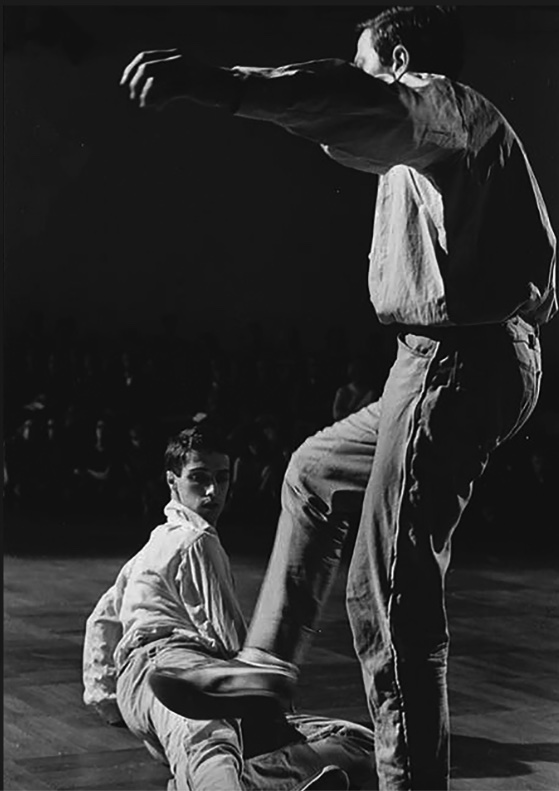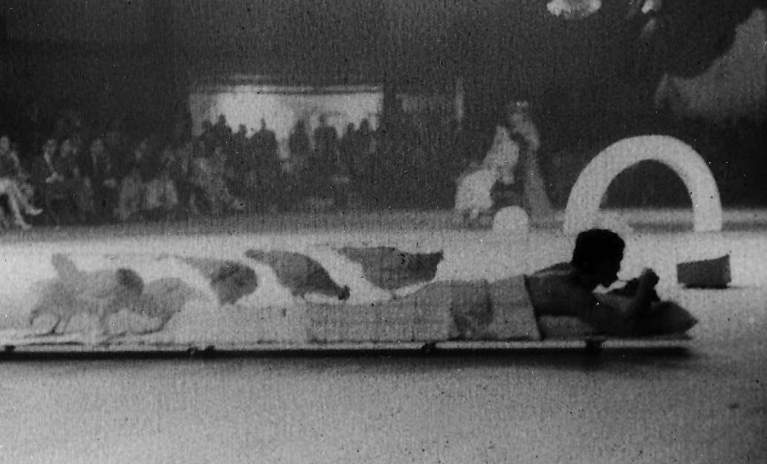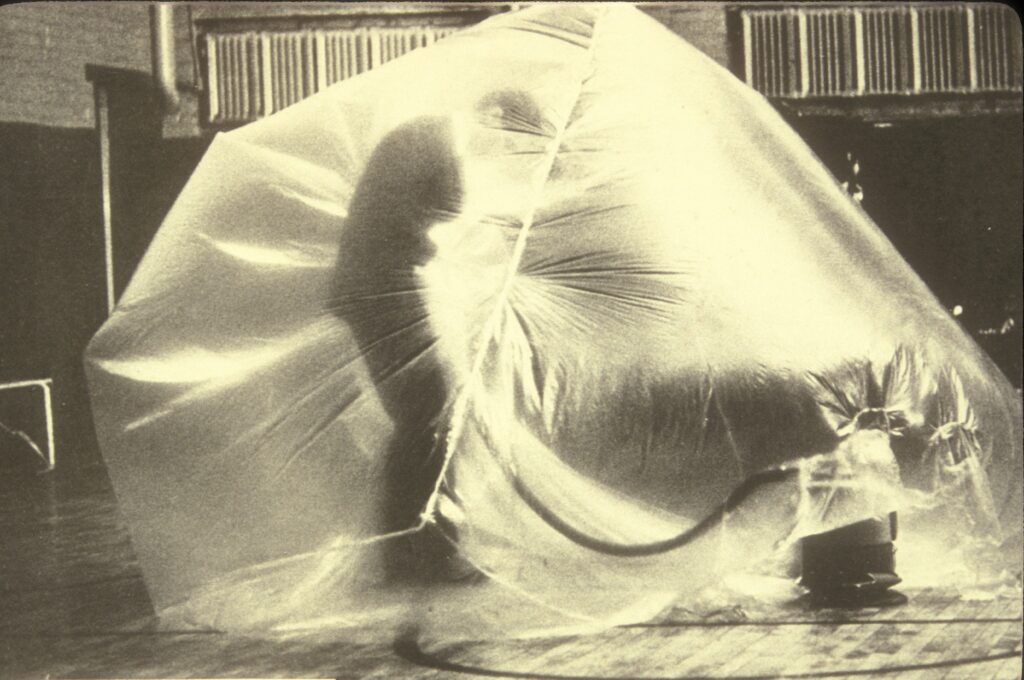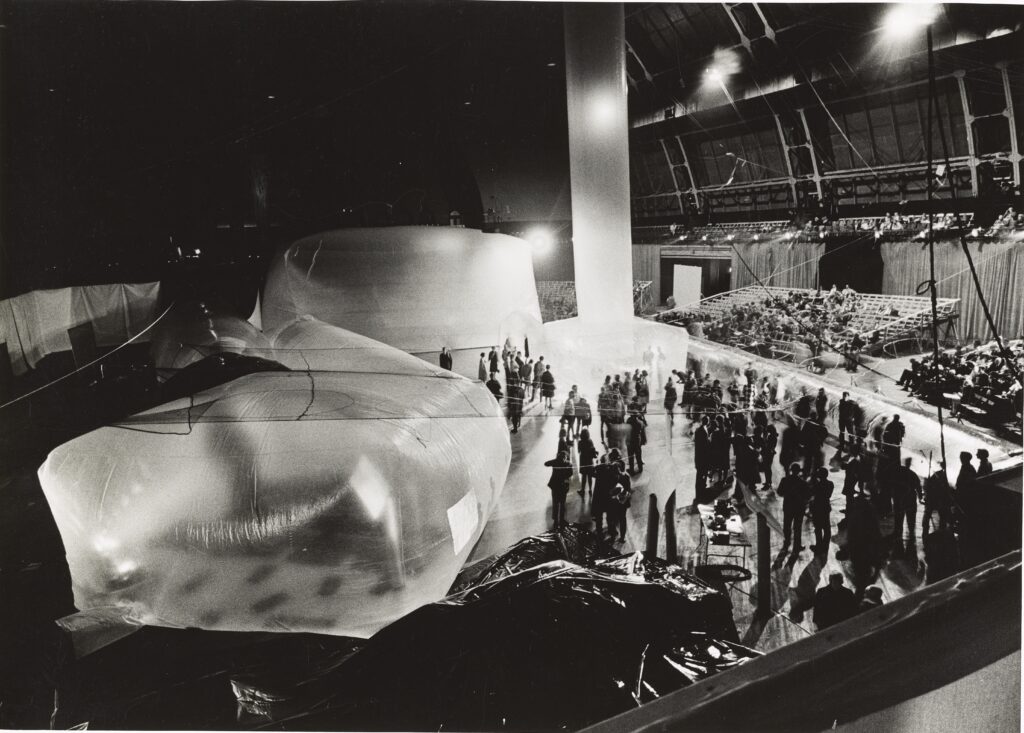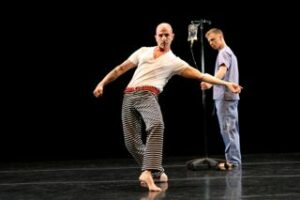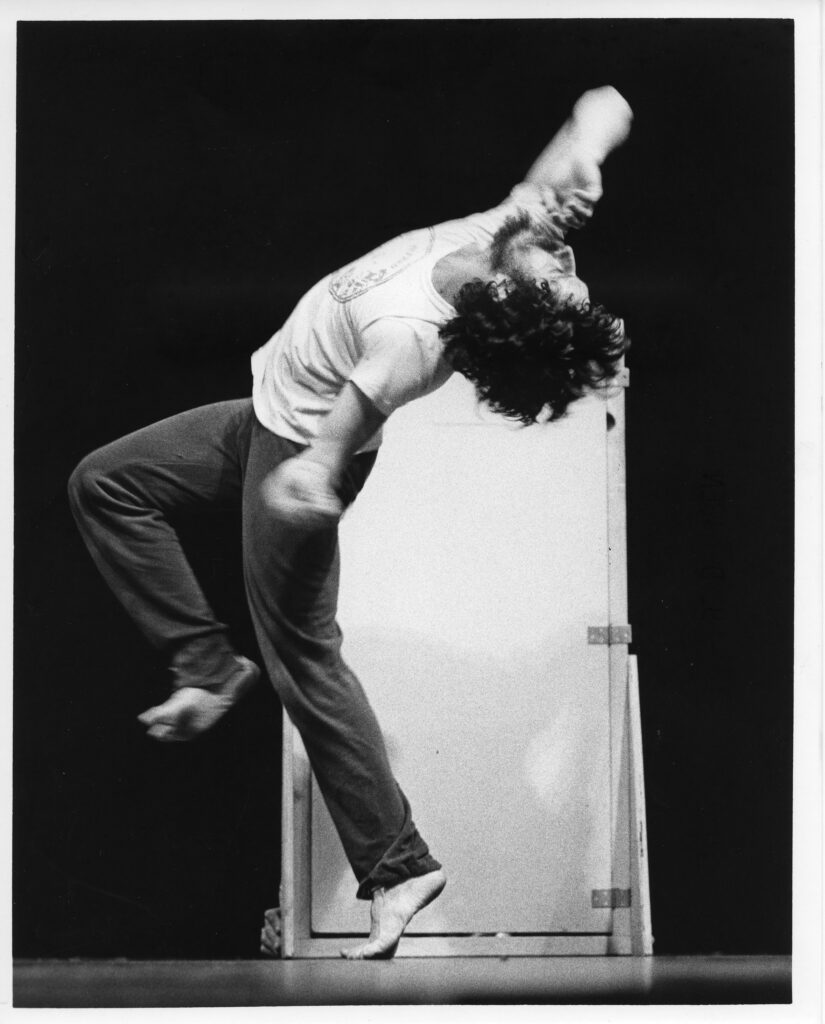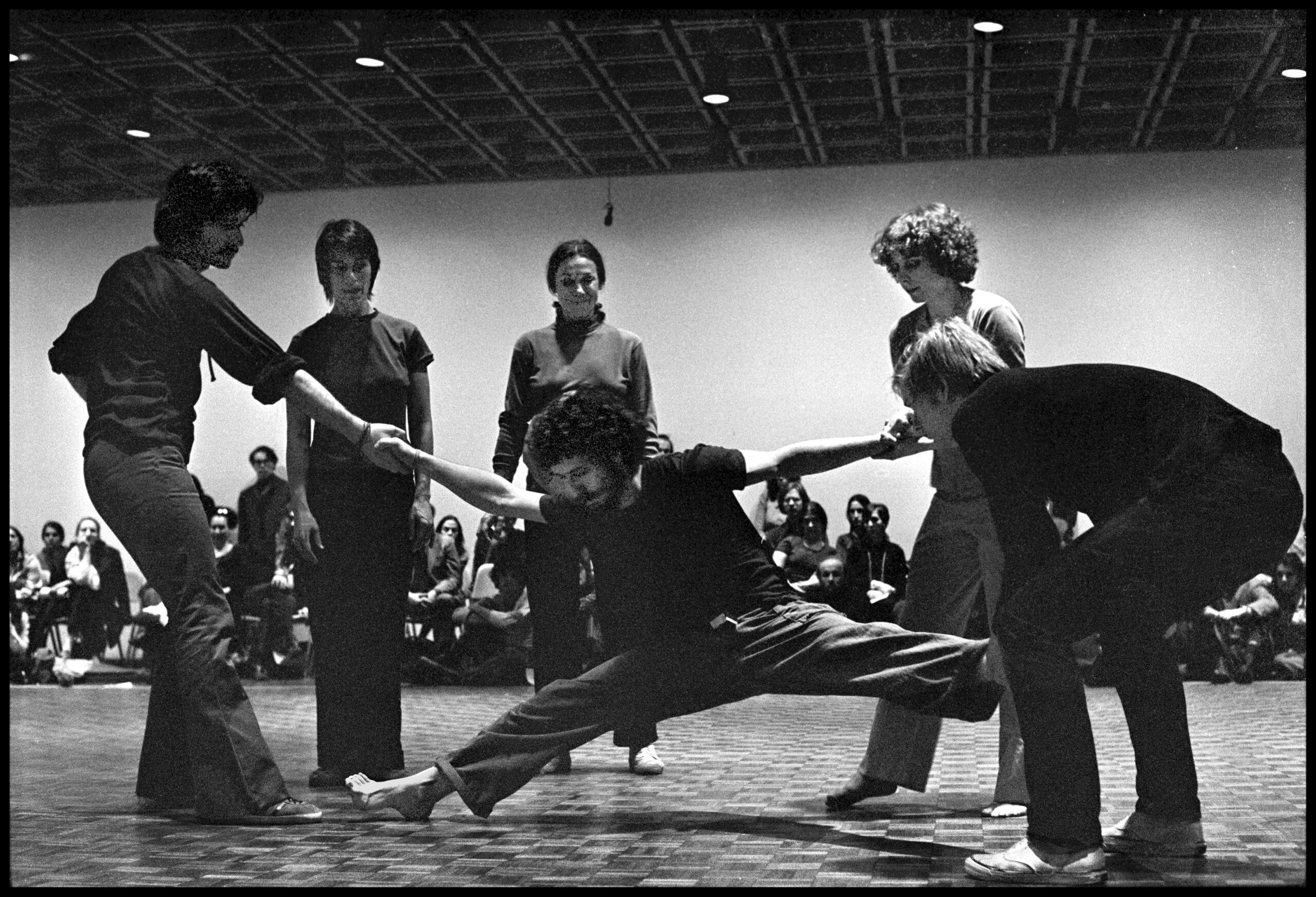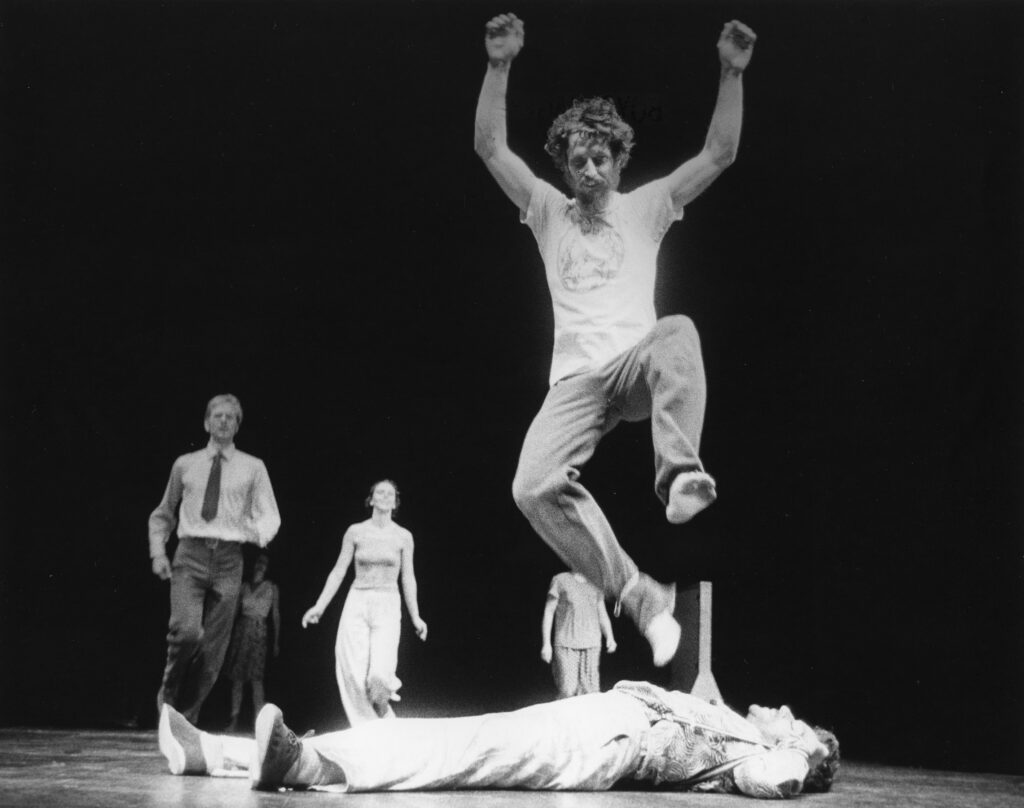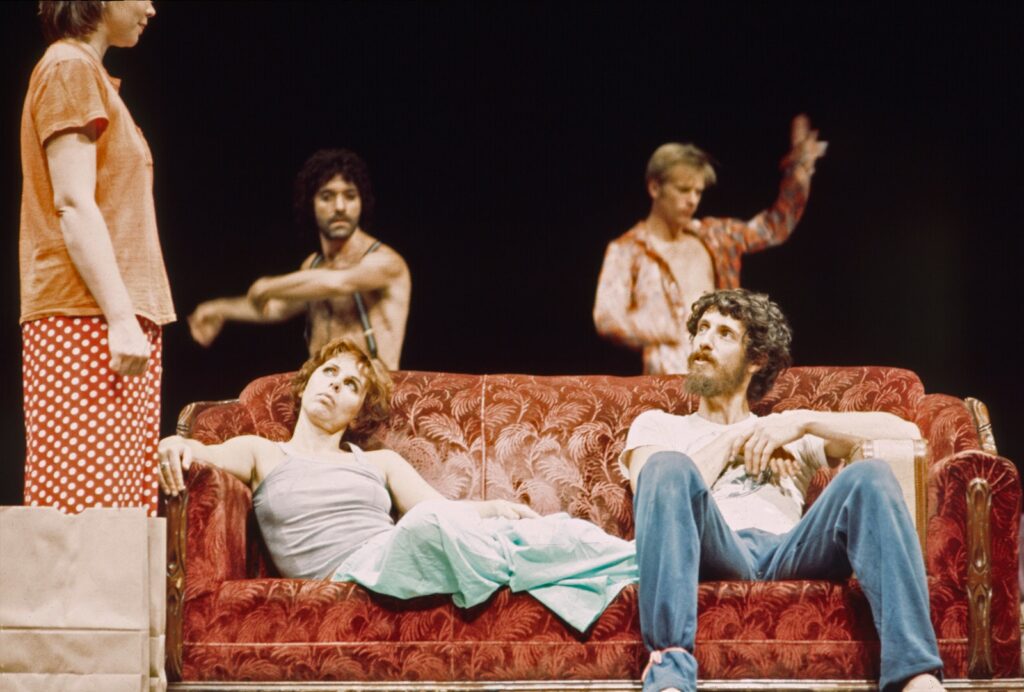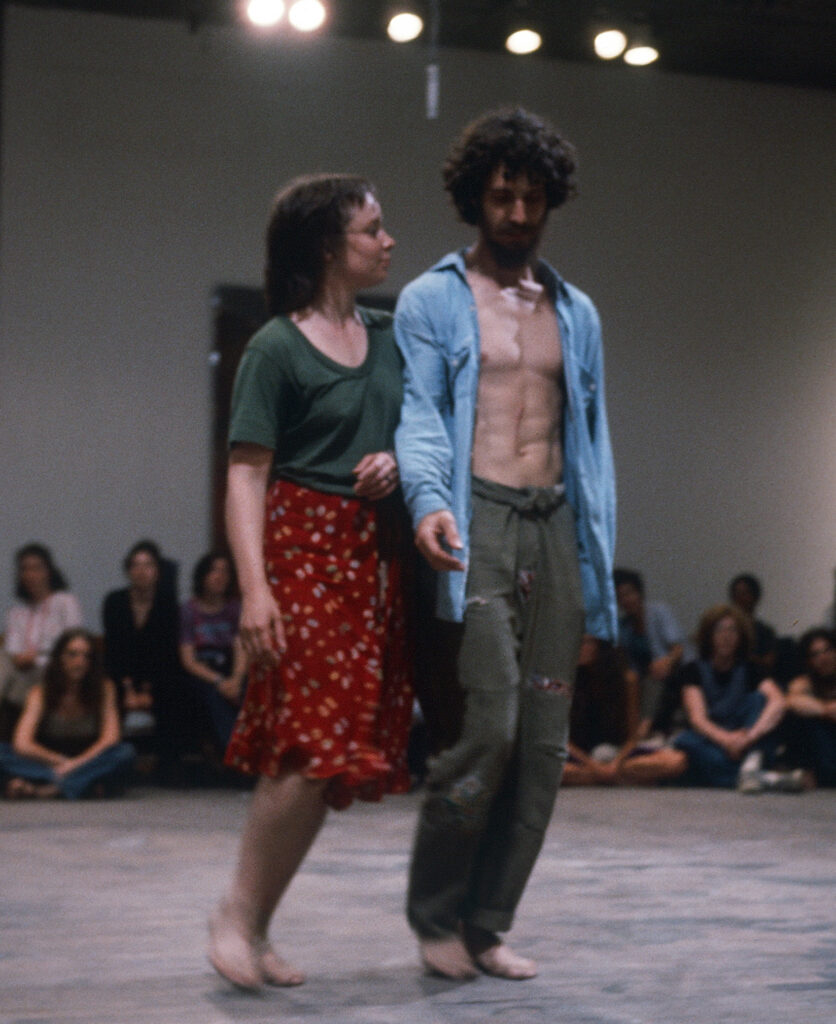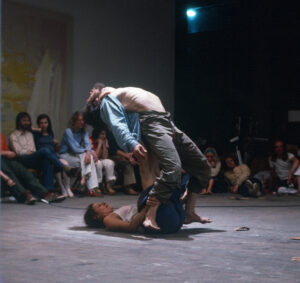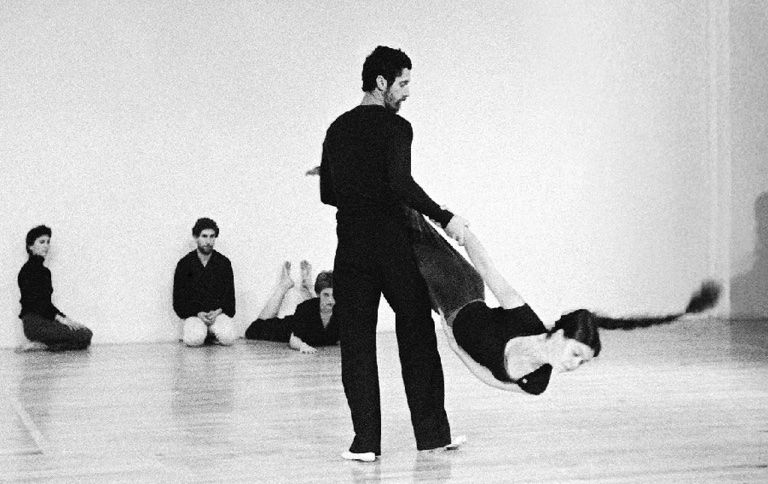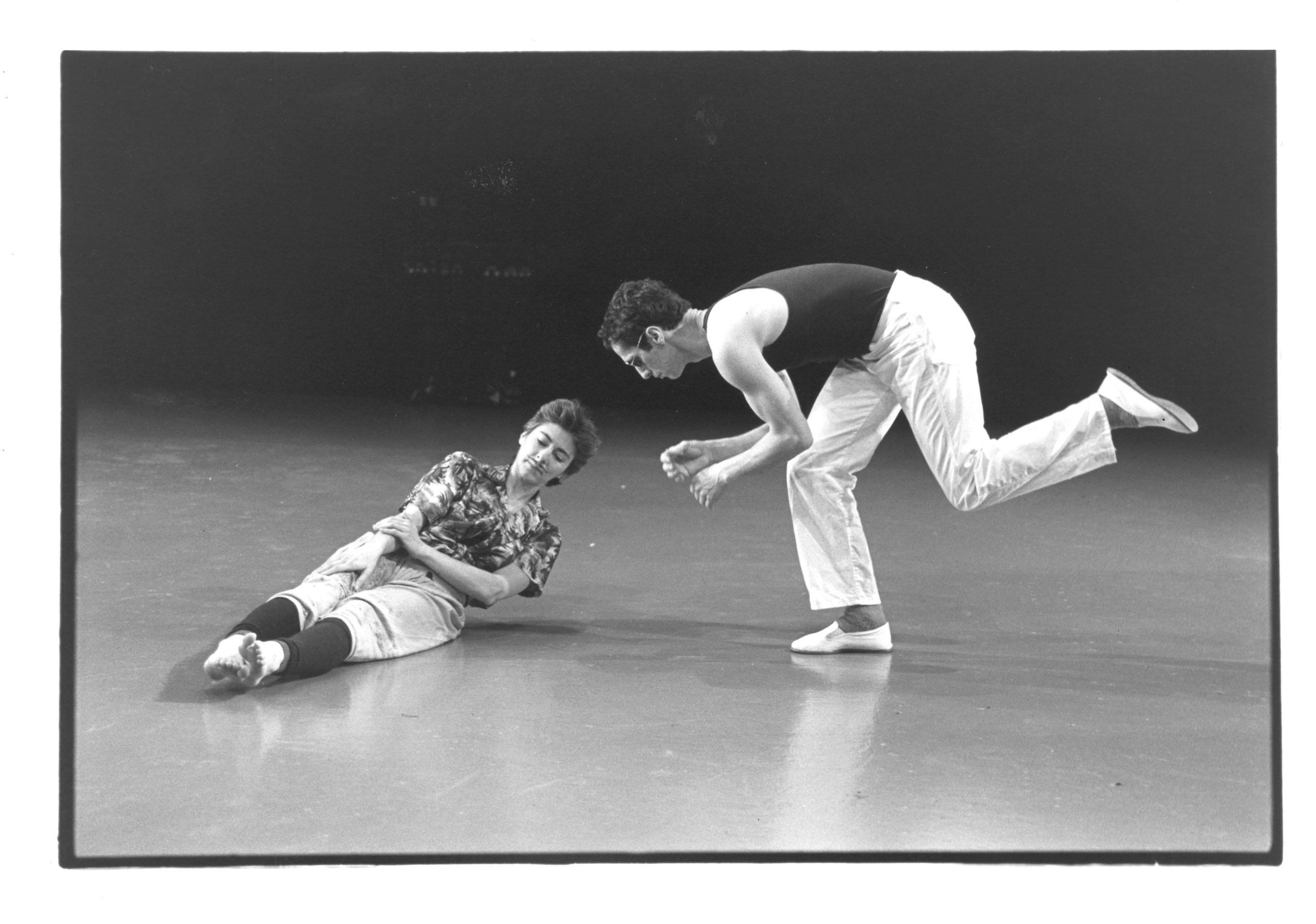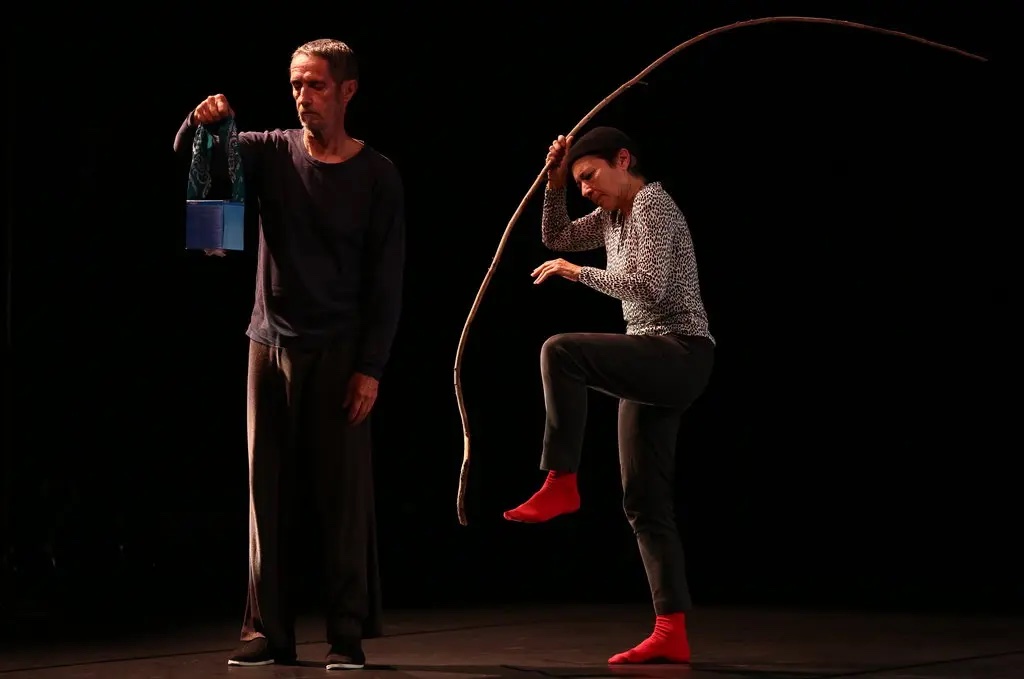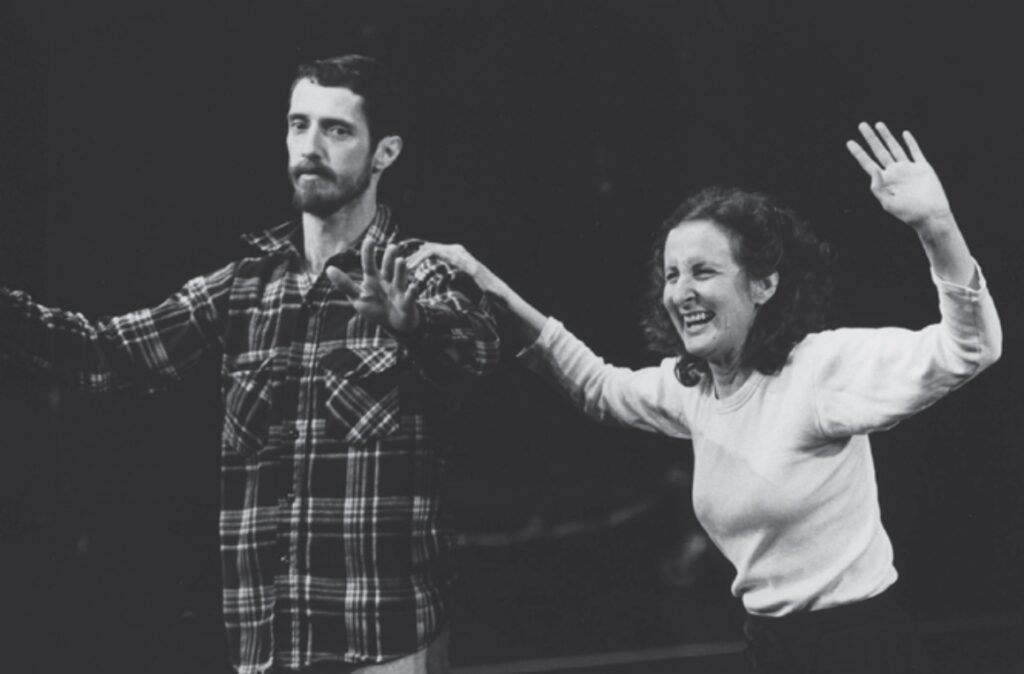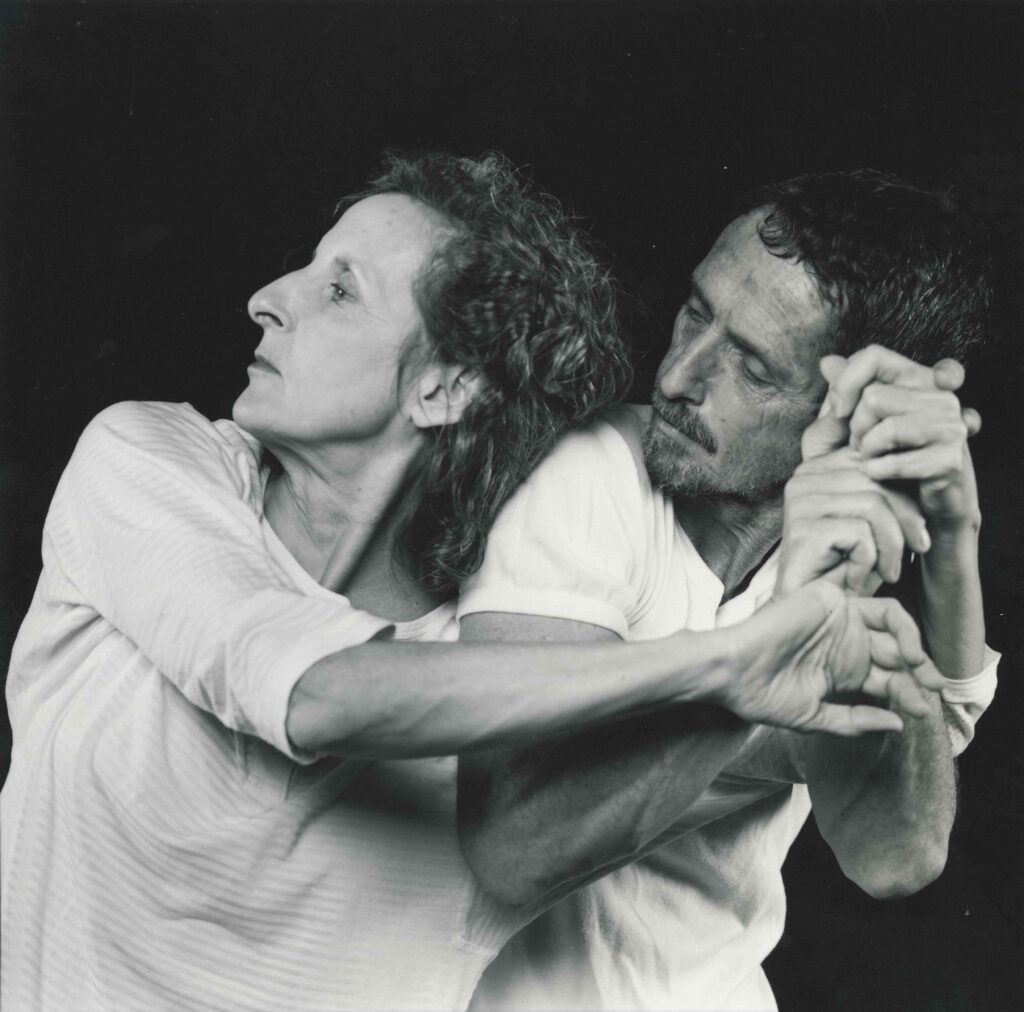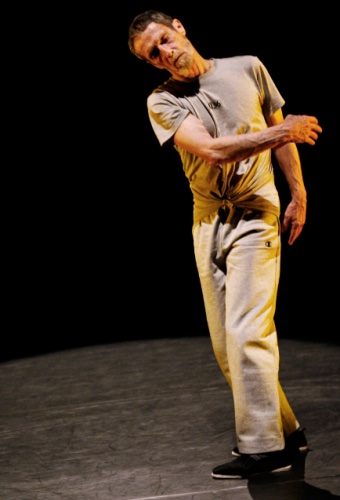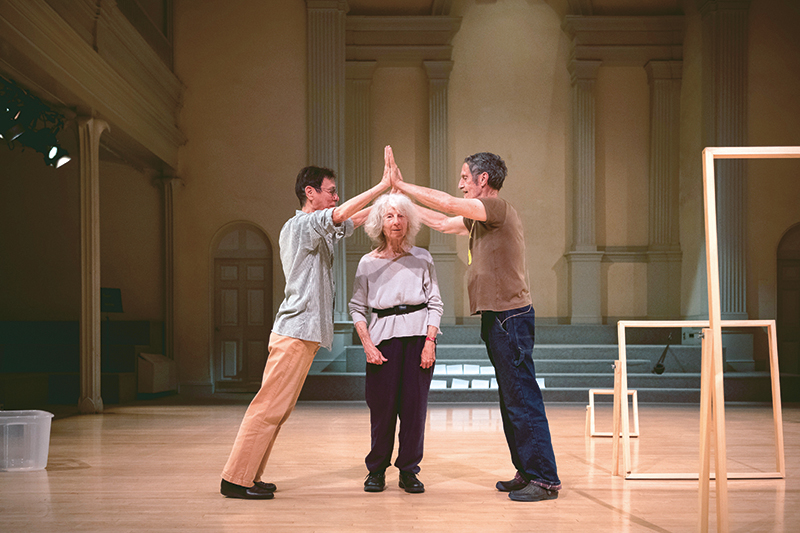Every year, I compile a list of the groovy dance books published that year. When I was writing the whole column myself, I posted short blurbs, much like the endorsements you see on the back covers of books. I tended to choose volumes that center dancers’ stories, because that’s what I love to read. Since 2022, when I started asking colleagues to help me in this endeavor, the blurbs grew into reviews, and the choices expanded too. I try to offer each colleague a book they might enjoy, and I hope you enjoy these recommendations too.
This year I am kicking off the column with two items that convey the monumental work of two of our greats: Martha Graham and George Balanchine. Both are visually spectacular while also making strong connections between past and present.
Btw, here’s some good news for readers: The American Dance Guild is organizing the second Dance Book Fair on March 29. The first one, last year, was a well-organized, festive event. It’s a great place to meet dance writers and to browse dance books published in the last 15 years.
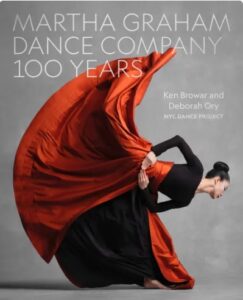 Martha Graham Dance Company 100 Years
Martha Graham Dance Company 100 Years
Produced by Ken Brower and Deborah Ory, NYC Dance Project
Introduction by Janet Eilber
Text by Peter Sparling
Black Dog and Leventhal Publishers
Reviewed by Wendy Perron
To celebrate the centennial of the oldest dance company in the country, The NYC Dance Project has produced a weighty book of starkly striking photos of twenty-four works by Martha Graham. As Janet Eilber writes in the introduction, “She taught us that when the body is stationary, the inner life can provide intense psychological movement—the growing fury, crushing grief, deepening desire, dawning recognition, or any number of emotional revelations that can stop us in our tracks. And in those moments, Martha wanted us to vibrate with intention that could be felt in the balcony of the theater while never moving a muscle.” These images do indeed vibrate. Almost each section starts with a historic photo that anchors us in the past. For example, Barbara Morgan’s iconic photo of Primitive Mysteries (1931), back when Martha herself was the sole figure, or Mary Hinkson as Circe (1933) by Anthony Crickmay. The current full-size photos of recent dancers like Lloyd Knight in El Penitente, Xin Ying in Imperial Gesture, and Peju Chien-Pott in Night Journey are simply magnificent. The black-and-white photos give a sense of volume and depth, while the color photos are vibrant but look less timeless.
That special kind of severe sculptural beauty of Graham dancers has lasted through the ages due, no doubt, to the strict technique classes. As you linger on each page, you could eventually get a sense of Graham’s psychological choreographic oeuvre over the century.
Some of the images place distinctive roles within a natural environment. Lloyd Knight and So Young An, shown in Circe on a rocky beach, bring out the danger of that story. Leslie Andrea Williams, posing in front of Noguchi’s fence in Frontier (1935), gives a different meaning to that dance, perhaps suggesting (optimistically) that a young Black woman could now survey the land with the same sense of hope that a young white woman did in 1935.
It’s satisfying that each of these great Graham works is represented by both the past and the present, thus implying a strong future. One could explain the magic with the famous Graham sound bite writ large on one of the early pages: “Dance is the hidden language of the soul.” Here’s to 100 years of dancing and watching that language.
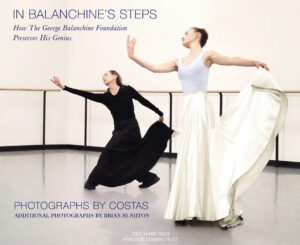 In Balanchine’s Steps: How The George Balanchine Foundation Preserves His Genius
In Balanchine’s Steps: How The George Balanchine Foundation Preserves His Genius
Photographs by Costas, Additional photographs by Brian Rushton
Designer and Photo Editor, Kyle Froman
Text Editor, Mindy Aloff
George Balanchine Foundation and TideMark
Reviewed by Barbara Forbes
This beautiful book documents the process of creating the Video Archives for the legacy of George Balanchine (1904–1983). Dancers who worked directly with the choreographer were invited to coach those who continue dancing his ballets in his absence. Thanks to former New York City Ballet dancer Nancy Reynolds, who brought the idea to Barbara Horgan, founder of the Balanchine Foundation, in 1994, this video archive is growing. In Balanchine’s Steps allows us to glimpse how the transmission takes place.
A brief biography of each contributor, dancer, teacher, writer, and critic accompanies the stunning in-studio photographs by Costas and Reynolds’ husband Brian Rushton. Each pairing of coach and dancer offers historical context, first-hand tips, and inspiring insights. The voice of each contributor is unique and absorbing as we learn about the process.
Memories even reach into Balanchine’s past, for example when Patricia Wilde shares that Balanchine adored Olga Spessitseva’s Odette, having worked with her on Diaghilev’s one-act Swan Lake. In other cases, the photographs themselves convey the communication, as with Stephanie Saland coaching Miriam Miller in Vienna Waltzes, or Suzanne Farrell coaching Elisabeth Holowchuk and Michael Cook in Meditation.
Occasionally philosophical disagreements are revealed. Bart Cook advises that Agon is “not a relationship…We’re things…we’re energies.” To which his partner Allegra Kent responds, “We’re not things. We’re human beings.”
Kay Mazzo helps Miriam Miller understand that performing Balanchine’s ballets demands a rich connection with one’s internal self, “a dialogue guiding your presence and aura.” Jonathan Stafford writes of his sessions with Merrill Ashley and Mimi Paul that they changed the way he approaches those roles. And Peter Boal recalls being coached by Maria Tallchief in Scotch Symphony pas de deux, and her gazing up at him. “When her eyes met mine, she blushed. I’ll never forget that look.”
It is clear that passing on Balanchine’s choreography is not only a question of mastering the steps. There’s Edward Villella advising the male dancer in Bugaku to “keep a space between her waist and your palms” to allow your partner to function (in his case, Allegra Kent); Violette Verdy observing that “It’s about a little thing called atmosphere;” or Kay Mazzo advising Miriam Miller that “not to make ballet positions.” Each dancer finds a new relationship with the role they are dancing. “You open your eyes to a whole different layer of the work,” says Maria Kowroski, on being coached in Bugaku by Mimi Paul and Villella.
Perusing the evocative photos and intimate observations in this book convinces me that Balanchine’s legacy lives in the hearts of dancers. Those who created roles in his ballets are guiding the next generations, enlivening his choreography with nuance, imagination and sensitivity.
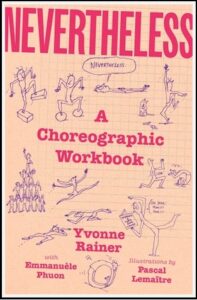 Nevertheless, A Choreographic Workbook
Nevertheless, A Choreographic Workbook
By Yvonne Rainer with Emmanuèle Phuon
Illustrations by Pascal Lemaître
Yale University Press
Reviewed by Nancy Alfaro
If only I’d had Yvonne Rainer’s Nevertheless, a Choreographic Workbook back in the day! This book is a gem, full of unique ideas for choreographing and teaching movement to trained dancers and pedestrian performers.
The first section of the workbook, titled “Conversation,” includes an insightful discussion with Yvonne Rainer and dancer/scholar Emmanuèle Phuon. Here they discuss Rainer’s early teaching session, “Nevertheless.” Rainer recorded it with instructions for the performers to interpret as they wished, while she lay on the floor pretending to sleep. The recorded instructions allowed the choreographer a chance to participate in the process, rather than being a hierarchical observer. When asked by Phuon what her motive was for ignoring the performers, Rainer said, “It was a one-shot experiment. It was a way of contesting or complicating my own authority. Or maybe amplifying it?”
The “Nevertheless” section includes a multitude of structural ideas and prompts for those who are doing pedestrian, trained, or task-oriented movement. (No Pantomime!) In this section, the body is deconstructed into segments, and Rainer proposes a variety of ways for these segments to move separately or in relation to each other. She also encourages her performers to integrate text, photos, film, and other mediums that have influenced them, culminating in a collage of words, movement, and visuals.
In the “Workbook” section, Rainer gives a series of short, choreographic commands, like, “Make a complicated two-minute piece,” or “Improvise spontaneously and emphasize one of the following: Time, Body, Light, Rhythm etc.” One of my favorite prompts is, “Make a piece that contains both functional and nonfunctional activities.” Pascal Lemaître’s simple, joyful illustrations are a gift throughout the book, but here his lunging and tumbling figures burst off page. These illustrated pages are followed by blank Notes pages so you can play along and notate your ideas.
Another section is called Pedagogical Vaudeville, so titled after a performance by students Rainer led in workshop at the Danish Academy of Art in 2000. Because she was working with untrained art students rather than professional dancers, she felt compelled to introduce ideas, rather than counting on them to bring in pre-determined moves. Here Rainer invites the reader to use the book’s Pedagogical Vaudeville diary as a score for a dance they may want to create.
Dancers, artists, musicians, choreographers, and educators will enjoy reading this engaging book by this inventive, critical thinker and creator.
 The Choreography of Environments: How the Anna and Lawrence Halprin Home Transformed Contemporary Dance and Urban Design
The Choreography of Environments: How the Anna and Lawrence Halprin Home Transformed Contemporary Dance and Urban Design
By Janice Ross
Oxford University Press
Reviewed by Stephan Koplowitz
Janice Ross’ latest book isn’t just a record of two creative rule-breakers; it’s a deep dive into what made their genius and iconoclastic reputations possible. Perhaps I am biased, given my interest in anything site-specific. However, this book creates an immersive world filled with insight and interesting stories that will appeal to many readers. More than a biography of a house, Ross renders the home as a real, living place, filled with purpose and teamwork, where many artists found inspiration and ideas for years.
Ross’s relentless attention to detail is utterly compelling. She takes a subject that could seem academic—the connection between art and architecture—but always brings it down to the actual day-to-day of the Halprins’ home life. Her research delves into every conceivable aspect of the space, and we are privy to Anna Halprin’s private journals, Lawrence Halprin’s architectural sketches, their shared correspondence, and several photographs. She investigates the form, function, and furniture of the home, revealing how each element was a deliberate act of design, part of a larger, domestic choreography. We learn, for example, about the sloped floors and split-level rooms that were not mere aesthetic choices but direct provocations to movement. The large, sliding glass doors were not simply for light but were designed to dissolve the boundary between indoors and out (a prime California element), inviting the natural environment into their lives and creative process. The benches and other design elements “honor the unwritten credo of the Halprin home: to build with nature, not on it.”
The most celebrated feature of the home is, without a doubt, the dance deck, and Ross provides a thorough analysis of its importance. “On the surface,” she writes, “the dance deck might seem merely a trendy backyard feature born in the postwar era of mid-century modernist homes… Yet viewed from the intersecting perspectives of theater, social history, and the architecture of domestic space, it is a transformative object.” The deck—and, by extension, as Ross describes, the entire home—set in motion new paradigms for how the body relates to space. It is no surprise that dance masters Trisha Brown, Simone Forti, Yvonne Rainer, and Meredith Monk (to name the boldest) found new perspectives on the deck, guided by the Halprins’ vision for movement and designed space.
The Choreography of Environments will delight anyone wishing to delve deeply into an artistic life that seamlessly blends personal ideals of aesthetics, function, and movement into daily life. One can’t leave this book without looking at one’s own home space with new eyes, and what if…
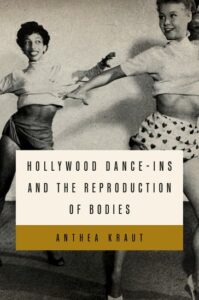 Hollywood Dance-ins and the Reproduction of Bodies
Hollywood Dance-ins and the Reproduction of Bodies
By Anthea Kraut
Oxford University Press
Reviewed by Elizabeth Zimmer
Hollywood Dance-ins and the Reproduction of Bodies might well serve as a litmus test for aspiring dance scholars. If readers are prepared to spend many hours parsing the theoretical language and following the thousands of superscript numbers to the 80 dense pages of notes and bibliography at the rear of Anthea Kraut’s new book, and if those readers do so with excitement, even delight, they are probably in the right business. If not—if their attention wanders, and if they give up the quest—well, one of the reasons people become dancers is that they’d rather not sit and read and ponder all the time, right?
I love this book. It opens doors for me to vocabularies and ways of thinking that first surfaced after I left grad school in the 1970s—to the language of literary theory, of critical race theory, of feminist and cinema studies. After a while Kraut’s flood of information mutates into wisdom; anyone who makes it through the text will be changed by her subtle interweaving of hard facts with lucid analysis. We will also have made the acquaintance of several people—Marie Bryant, Angie Blue, Alex Romero and others—mostly absent from even a good dance history education, screen dancers likely to have been uncredited in films or assistant dance directors and teachers paid a mere fraction of what their male equivalents, like Hermes Pan, were earning.
Kraut declares that her aim is “to advance understandings of credit and debit as racialized and gendered relations that play out at the level of the body…” Intrepid readers will absorb concepts like surrogation, indexicality, “above the line” and “below the line” positions, and how these apparently simple, often financial terms apply to the transmission of dance information. They will learn about the role Ebony magazine, the Black community’s equivalent to Life, played in the years before television took over the job of showing us to ourselves. Ebony and its sister publication, Jet, collected and preserved many stories of the remarkable women and gay men who transmitted the work of film choreographers to white stars who worked less hard than they otherwise might to look spectacular onscreen. They’ll discover the trio of invisibilized dancers, Ernie Flatt, Carol Haney, and Jeanne Coyne, responsible for Debbie Reynolds’ triumph in Singin’ in the Rain. Kraut also details the remarkable interracial collaboration between Black star Lena Horne and white dancer Haney, herself celebrated for her performance in The Pajama Game on The Perry Como Show.
Hollywood Dance-Ins is a book I wish I had written, but in a thousand years I would not have had the patience, or the insight, to do the research and the thinking involved here. Masquerading as a dance history book, its real subject is political economy. If they bother to read it, it will inflame the barbarians currently running our country and our schools. Buy it quickly before they ban it or burn it and it becomes impossible to find.
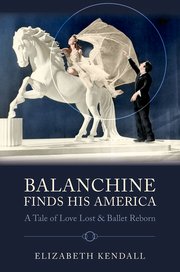 Balanchine Finds His America: A Tale of Love Lost and Ballet Reborn
Balanchine Finds His America: A Tale of Love Lost and Ballet Reborn
By Elizabeth Kendall
Oxford University Press
Reviewed by Martha Ullman West
Elizabeth Kendall’s deeply personal account of the great choreographer’s early years in this country is as meticulously researched and richly detailed as its predecessor, Balanchine and the Lost Muse: Revolution & the Making of a Choreographer. Yet it’s startlingly different.
The author also of Where She Danced, an elegantly written book about the feminist origins of modern dance, in which Kendall examined the lives of her subjects (readably !) in the context of their times and their culture, does the same in Balanchine Finds His America. In 207 pages, including an exhaustive bibliography (Disclaimer: my book, Todd Bolender, Janet Reed and the Making of American Ballet, is one of her sources) Kendall examines, through the contradictory lenses of feminism and Freudianism, a fifteen-year period of Balanchine’s life and work that was phenomenally productive professionally, and personally pretty turbulent.
She begins with his arrival in New York in 1933, a survivor of the 1917 Bolshevik revolution who was recovering from tuberculosis, broke, jobless, and having cast his lot with a young moderately wealthy American named Lincoln Kirstein. She ends in 1948: Balanchine has led three companies, choreographed for the Metropolitan Opera Ballet and Denham’s Ballet Russe de Monte Carlo, established the School of American Ballet and New York City Ballet, headed American Ballet Caravan’s government-sponsored 1941 tour of South America, choreographed for Broadway and the movies, been married twice and had multiple affairs with dancers. Serenade, Concerto Barocco, Theme and Variations, and Four Temperaments were all made in this period.
The dancers who inspired these ballets were not all women, although readers new to Balanchine’s story might think so. They might also, mistakenly, think the music was of secondary importance. As for Balanchine the predator, of which Kendall both accuses and forgives him, he was after all a man of his time, and in at least one instance, on the 1941 tour, teenager Marie-Jeanne Pelus, according to one dancer, pursued him relentlessly.
“I want Balanchine’s story to stand in for the all-too-human stories of all great artists, as they make the bold and often treacherous inner discoveries that lead to their art,” Kendall writes at the end of her preface. That’s ambitious: All artists are products of their times and their cultures, and some, Balanchine included, are focused more on making the work than probing their own psyches. To give Balanchine’s life story immediacy, Kendall chose to write it in the present tense, making the reader wonder if something actually happened, and how she knows. However, with Balanchine Finds His America, Kendall makes her readers think and question, not only what she says about Balanchine and his work, but also the art of biography.
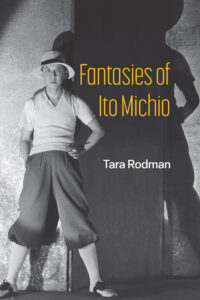 Fantasies of Ito Michio
Fantasies of Ito Michio
By Tara Rodman
University of Michigan Press
Reviewed by Wendy Perron
The Japanese-born Michio Ito is a fascinating precursor to American modern dance. But when you read the research, you realize that the stories he told about himself were sometimes true and sometimes fictional. Tara Rodman’s solution to this dilemma is to say that his fantasies are equally important to the reality, that his desires say something about him as a boundary-crossing artist and about the culture surrounding him.
“Fantasy is how we know ourselves,” Rodman offers, “how we perform ourselves and come to think of those performances as constitutive of ourselves.” She alternately defines his tall tales as either self-promotion or “creative acts of the imagination that sustained” him. Another layer is that Ito, as an Asian dancer in the West, was a screen onto which many fantasies of others were projected, relating to “the national, racial, and imperial significations assigned it.” So on the one hand, we have his fanciful stories about dancing at a Pavlova performance or being pals with Nijinsky, and on the other hand we have his arduous path of building communities for dance in New York and Los Angeles during the time of the “yellow peril.”
One of the ways Ito was a pioneer of modern dance was that he influenced Louis Horst, the composer who laid down the rules for structuring choreography. When I researched Ito for my Unsung Heroes of Dance History series in 2021, I discovered that Horst had modeled his ABA structure on what he learned from Ito in the 1920s. That format became the favored method of organizing materials in modern dance for decades.
After the Japanese bombed Pearl Harbor in 1941, the FBI raided Ito’s home in L.A. and arrested him as an enemy alien—which was not uncommon for issei men (born in Japan). He was taken into a series of prison-like DOJ facilities. In 1943, his request for repatriation was granted, and he sailed back to Japan. The American government had killed his dream of being a “universal artist.” But then—irony of ironies—that same American government offered him the job of producer at the Ernie Pyle theater in Tokyo, a top position during the American Occupation. In bombed out, devastated Japan, as Rodman points out, Ito became part of the remaking of his home country.
Ito is a towering, idealistic figure who crossed cultures, national identities, and dance genres. Rodman’s research is vast and impeccable. Because she traveled to Japan and learned the language, she could report on how the Japanese media covered him in both L.A. and Tokyo over the years. Rodman gives us a comprehensive excavation into his life, his work, and his dreams.
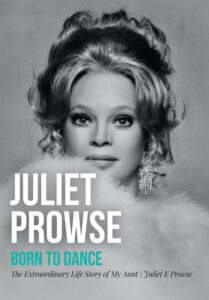 Juliet Prowse: Born to Dance, The Extraordinary Life Story of My Aunt
Juliet Prowse: Born to Dance, The Extraordinary Life Story of My Aunt
By Juliet E. Prowse
Prowse Media
Reviewed by William Whitener
Juliet E. Prowse has written a loving tribute about her aunt, the great and magnetic entertainer, Juliet Prowse. The author traces Juliet’s early years as a child in South Africa, where she studied ballet with Marjorie Sturman, co-founder of the Festival Ballet Society. It was 1948 and Juliet showed tremendous promise as a 12-year old. Long-limbed, strong, and with a smile that lit up the room, the young dancer became a member of the company and performed as the Queen of the Willis in Giselle. By 1954, she was living in London with the hope of joining Anton Dolin’s Festival Ballet. Alas, she was six feet tall on pointe and not chosen. Juliet began to forge her own path. The author proudly recounts her aunt’s rapid ascent, boosted by the encouragement of family members, friends, and lovers.
After replacing a principal dancer in a pantomime at The Palladium, Juliet tried out for the eminent team of Jack Cole and Gwen Verdon, who were in London auditioning dancers for the film Gentlemen Prefer Brunettes. She was cast, and this opportunity was followed by a featured role in the West End production of the musical Kismet. Her boundless talent was recognized by leaders in the field including the choreographer Hermes Pan. Juliet Prowse was launched.
The remainder of the biography chronicles the trailblazing efforts of Juliet as she became a dazzling presence on stage, film, and television; she developed a company of loyal dancers, choreographers, designers and musicians. Lauded for her fine singing and comedic gifts in musical theater productions, she was one of the most celebrated and highly paid performers in Las Vegas. Her artistic standards were legendary.
This is an inspiring remembrance of a beloved woman who successfully brought dance, both subtle and extravagant, to the general public. In her niece’s detailed portrait, Juliet’s love of life, joy, heartbreaks, and determination are on solid ground.
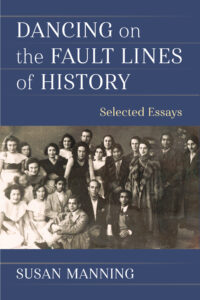 Dancing on the Fault Lines of History
Dancing on the Fault Lines of History
By Susan Manning
University of Michigan Press
Reviewed by Morgan Griffin
Eminent dance scholar Susan Manning kicks off this selection of her essays with a brief history of herself. I appreciated this inclusion, as any interpretation of dance history is inherently personal. Her foreword reveals not only her own privileges and biases, but also her revised thinking over time. In fact, the evolution of these preconceptions serves as the through line of the book.
Divided into sections by “keywords,” the essays, spanning from 1986 to 2025, are organized into themes of “Gender and Sexuality,” “Whiteness and Blackness,” and “Nationality and Globalization.”
These themes are interpreted through the lens of spectatorship. The essays recount how viewership of these themes not only vary from viewer to viewer, but also adapt over time based on social movements, global awareness, and personal preferences. Isadora Duncan is on one hand viewed as a feminist offering liberation of the body, on the other hand viewed as objectifying the female body and simultaneously glorifying whiteness. Pina Bausch is criticized for her representation of traditional and at times violent gender roles. Or is her work purely a commentary deeply rooted in German history? Did Mary Wigman appropriate and Orientalize Asian influences, or did her work inspire Ohno Kazuo, who then adapted her forms into the Japanese dance world? Was she a Nazi empathizer or did she succumb so as to provide safety and subtle rebellion?
At the onset Manning acknowledges the fact that two or many different things can be true. Dance is an ephemeral art that puts bodies on view for people to see, to perceive, to interpret. How can there not be one million truths? Nonetheless, I felt a kind of hesitation on Manning’s part to make any real claim, any strong stance. She introduces each essay with a short forward calling out missteps or missing perspectives which she has since acknowledged. There seemed a bit of nervousness written between the lines. Perhaps a fear of being a white woman writing across these fault lines? And yet in teetering (even dancing) between these lines, I was left with no “aha” moments, no final clarity. Instead, I was left with a web of interweaving histories, accounts, and viewpoints that I struggled to synthesize.
And yet perhaps Manning has skillfully made her point. We are constantly faced with the struggle of how on earth to capture dance history at all, given the volume of oral and written histories we have access to. What Manning eloquently reveals is that we have the power to reconstruct our perceptions, by constantly learning more, by actively seeing differently, by changing our former understandings to try to absorb as many histories as we can.
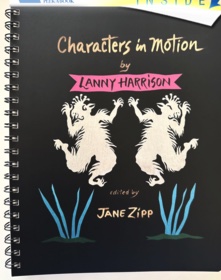 Characters in Motion: A Workbook of Improvisational Exercises
Characters in Motion: A Workbook of Improvisational Exercises
By Lanny Harrison, edited by Jane Zipp
Vervante
Reviewed by Wendy Perron
An unforgettable performer, Lanny Harrison embodied many colorful characters within Meredith Monk’s The House for years. As Harrison recounts in this book, “I fell in love with improvisation—minimally held within simple structures.” Her lively approach comes out of a lifetime of teaching theater and movement on tour with Monk, at Naropa University, and in New York. Although the assignments are geared more to actors than dancers, this workbook offers many clues for anyone to begin envisioning and improvising. Some of the exercises are group visualizations; others are very specific. In the series called Tiny Two-Character scenes, one score is simply “2 characters: 1 is the Earth, 1 is the Moon. They are old lovers having an argument.” Other examples are Characters with their Shadows, in which the Shadow reflects the Character’s movements in some way. The Shadow can be inserted into other formats, for instance, Difficult Landscape with Shadows. In the Circle Dance, students pick up gestures and vocalizations during the movement session. As Harrison says of this end-of-class ritual, “Everyone is a Leader and everyone is a Follower.” Also a visual artist, Harrison has adorned these pages with vibrant watercolors and whimsical stick figures. Permeating the book is a level of charm—or maybe a faith—in a sophisticated kind of make believe.
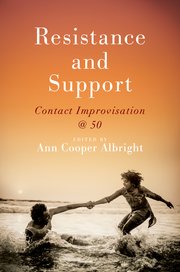 Resistance and Support: Contact Improvisation @50
Resistance and Support: Contact Improvisation @50
Edited by Ann Cooper Albright
Oxford University Press
Reviewed by Wendy Perron
With a touch of nostalgia for the 47 years of the engaging journal Contact Quarterly, I welcome this volume, which came out of the 50th-anniversary celebration at Oberlin College in 2022. Edited by Ann Cooper Albright, who organized the anniversary conference and a three-day writing workshop, these 20 essays highlight the evolution of Contact Improvisation from many angles. In the introduction, Cooper Albright writes that she chose the title, a seeming binary of “Resistance and Support,” because of its potential synergy. In the CI world, physical resistance is a way of supporting your partner, and she extends that idea to the intellectual realm: “When I push back on your ideas in a responsive and not a reactive manner, it is a kind of support.”
A glance at the contributors’ list reveals how CI, spearheaded by Steve Paxton (1939–2024) has spread from its beginnings at Oberlin and Bennington Colleges to other countries including Canada, Poland, China, Brazil, Mexico, and Taiwan. As we enter a post–Paxton period of CI, this collection is an expansive guide as well as a provocation.
In the first essay, “Mindfully Rocking and Rolling,” Dena Davida recalls the beginnings of CI cradled in an era of idealistic, bold, feminist rebellion. The entire volume is a testament to that 1970s slogan “The personal is the political.” One cannot write about CI without being personal because it is about one person’s body touching another person’s body. Kristin Horrigan writes on how gender identities complicate the experience of CI, poignantly lacing her essay with her own experience. In “The Small Dance of Listening,” Lesley Greco takes off from Paxton’s idea of the small dance as a score for how gravity affects us. She extends it to communing with other bodies, describing describes various listening practices where “Thinking and sensing are each part of an integrated whole.”
Sarah Young’s essay “Underscoring Nancy Stark Smith’s Legacy: Definitions and Disruptions” honors Nancy Stark Smith (1952–2020) with an explanation—and challenge—to Smith’s invented form, the Underscore. It’s a framework for solo and group improvisation that is performed annually at 70+ sites simultaneously. As one of the facilitators, Young has stretched the score, generating a bunch of questions for herself. Ultimately this is a loving tribute, reflecting the generous openness and questioning that Smith brought to her teaching and her editing of Contact Quarterly.
Paul Singh and Emma Bigé’s dialogue, “Doing It Wrong: Contact’s Counter Countercultures,” referring to that famous 1983 moment when Ishmael Houston-Jones and Fred Holland created Oo-Ga-La to declare their resistance as Black men wearing boots. Coincidentally, Houston-Jones just gave the score for that piece to a younger generation who will perform it in January at New York Live Arts.
To see such a robust treatment of CI at this point is heartwarming. CI has lasted way longer than its antecedents: Judson Dance Theater of the early 1960s and Grand Union of the ’70s. This collection helps expand and diversify a beloved form of American dance.
§§§
Books Announced or Received
Moving through Life: Essential Lessons of Dance
By Naomi Goldberg Haas
With Mikhaela Mahony
University Press of Florida
After a career that included dancing with Pacific Northwest Ballet, Naomi Goldberg Haas started a unique endeavor: Dances for a Variable Population. It’s a group of older dancers and nondancers that performs for senior centers and in parks in the NYC area. Her new memoir traces her dance journey and give uplifting lessons according to Movement Speaks® a curriculum that Goldberg Haas developed for aging people. DVP also has a teacher training program.
Teaching and Learning Dance through Meaningful Gestures
Text by Annabella Lenzu, photography by Todd Carroll
A longtime teacher at NYU Gallatin, Annabella Lenzu gathers nuggets from her 35 years in the field into three sections: Teaching, Learning, and Resources. This promotional video illustrates her lively style and holistic approach. Another achievement of Lenzu is that she organized the Dance Book Fair mentioned above.
Dance and Science in the Long Nineteenth Century: The Articulate Body
Edited by Lynn Matluck Brooks, Sariel Golomb and Garth Grimball
University Press of Florida
These 20 essays consider the ways that science and dance looked at the human body during an era of colonial expansion. With contributions by Jane Desmond, Emily Coates, Claudia Jeschke, Pallabi Chakravorty, Andrea Harris, and others, the scope is global. According to the press release, this collection “sheds light on a historical interplay that has shaped many of today’s political and cultural realities.”
White Screens, Black Dance: Race and Masculinity in the United States at Midcentury
By Pamela Krayenbuhl
Oxford University Press
Pamela Krayenbuhl suggests that Africanist movement vocabularies prevalent in mid-twentieth century film and TV have produced models of masculinity that still hold sway today. These styles are described in these four chapter headings: The Nicholas Brothers: Classy and Dignified; Gene Kelly: Brash and Athletic; Elvis Presley: Virile and Phallic; and Sammy Davis, Jr. Modish and Chameleonic.
Radical Sensing and Performer Training: Elsa Gindler’s Embodied Translations
By Rebecca Loukes
Routledge
An early pioneer of somatic practice, Elsa Gindler (1885–1961) rebelled against the aggressive ways that Gymnastic was taught in Germany. She was a teacher of both Charlotte Selver and Carola Speads, both of whom influenced Elaine Summers. Loukes devotes one chapter to Summers’ development of Kinetic Awareness as well as the Sonic Meditations of Pauline Oliveros, the avant garde musician who studied with Summers. Oliveros’ idea of Deep Listening is related to Summer’s idea of sensory awareness as a way to explore and to heal.
Reissue in paperback: Making Caribbean Dance: Continuity and Creativity in Island Cultures
Edited by Susanna Sloat
Florida University Press
Originally produced in 2010, this anthology is a touchstone to scholarship about dance in this part of the world. The twenty-one essays are grouped into the following sections: Island Connections, Cuba, Jamaica, Haiti, Dominica, St. Lucia, Barbados, Haiti, Carriaco, and Trinidad and Tobago. Writers include illustrious dancer/scholars like Cynthia Oliver, Celia Weiss Bambara, and Tania Issac.
Buddhist Dances: Movement & Mind
By Joseph Houseal
Edited by Mindy Aloff
Motilal Banarsidass
Longtime dance writer Joseph Houseal has explored sacred dance as expressions of Buddhist philosophy, including chapters on Antony Tudor and Merce Cunningham. From the website: “This richly illustrated volume documents rare and endangered Buddhist dance traditions in ten countries, including Japan, Bhutan, India, Nepal, China, Tibet, Mongolia, Sri Lanka, England, and the United States.”
